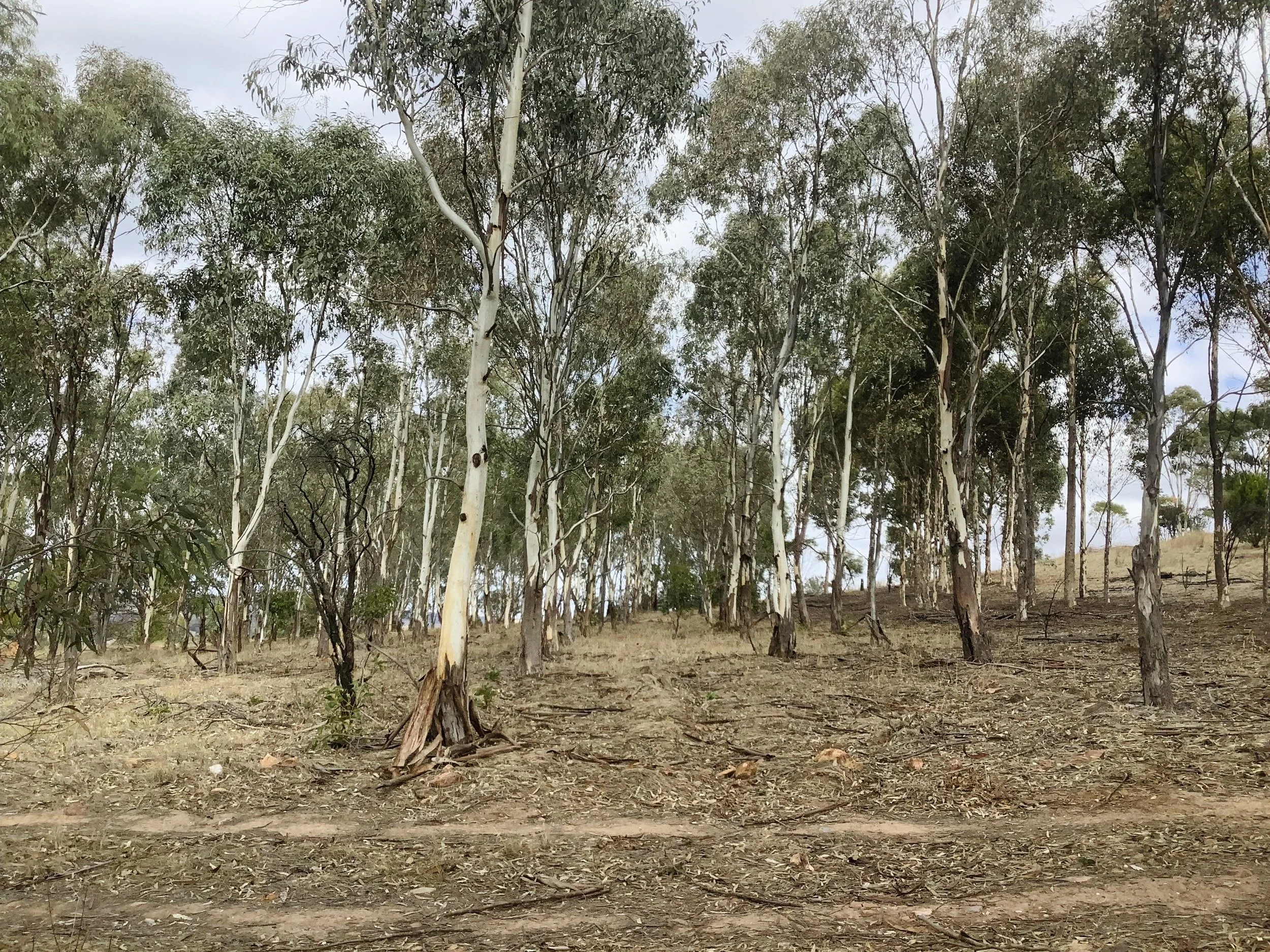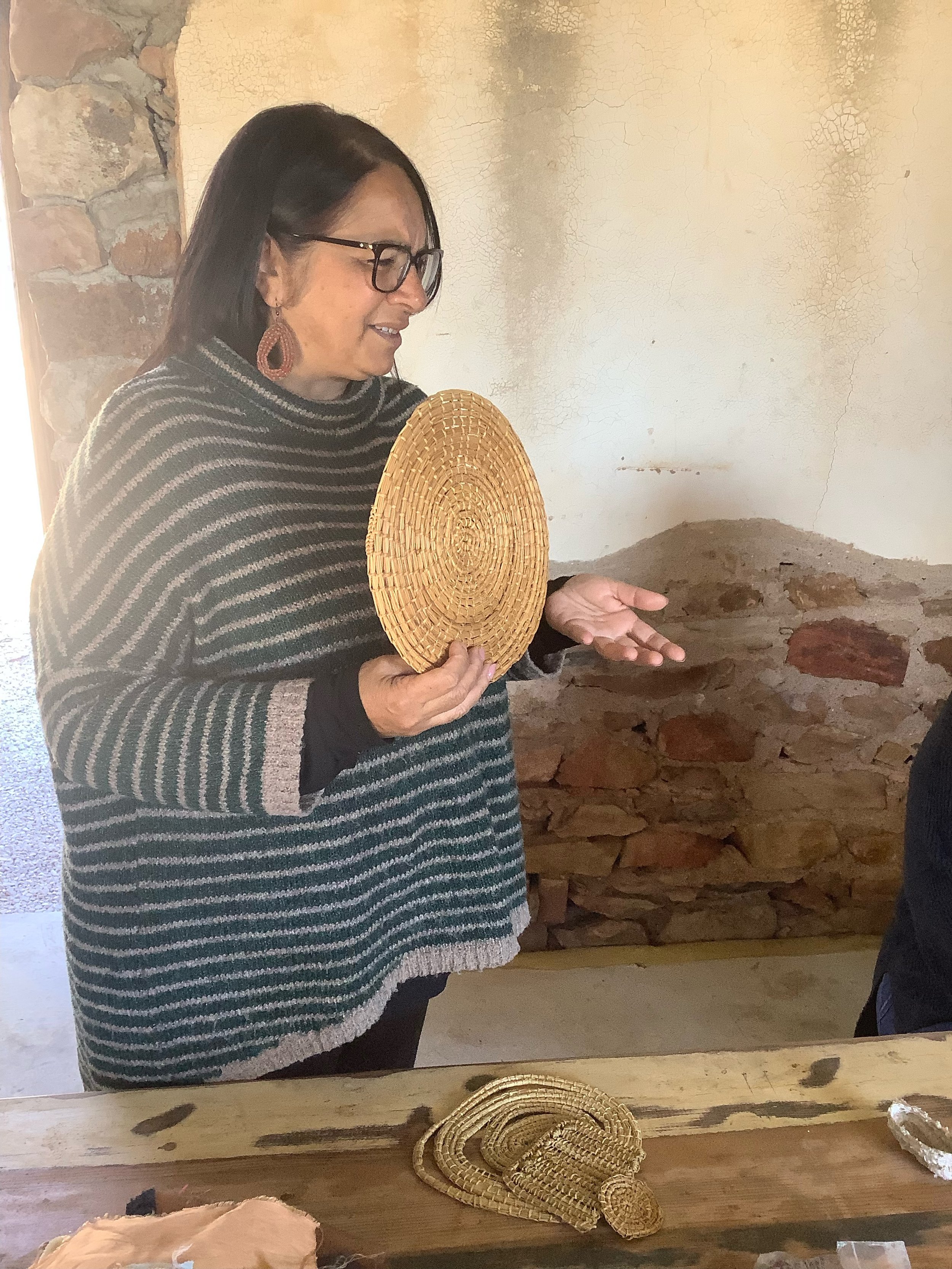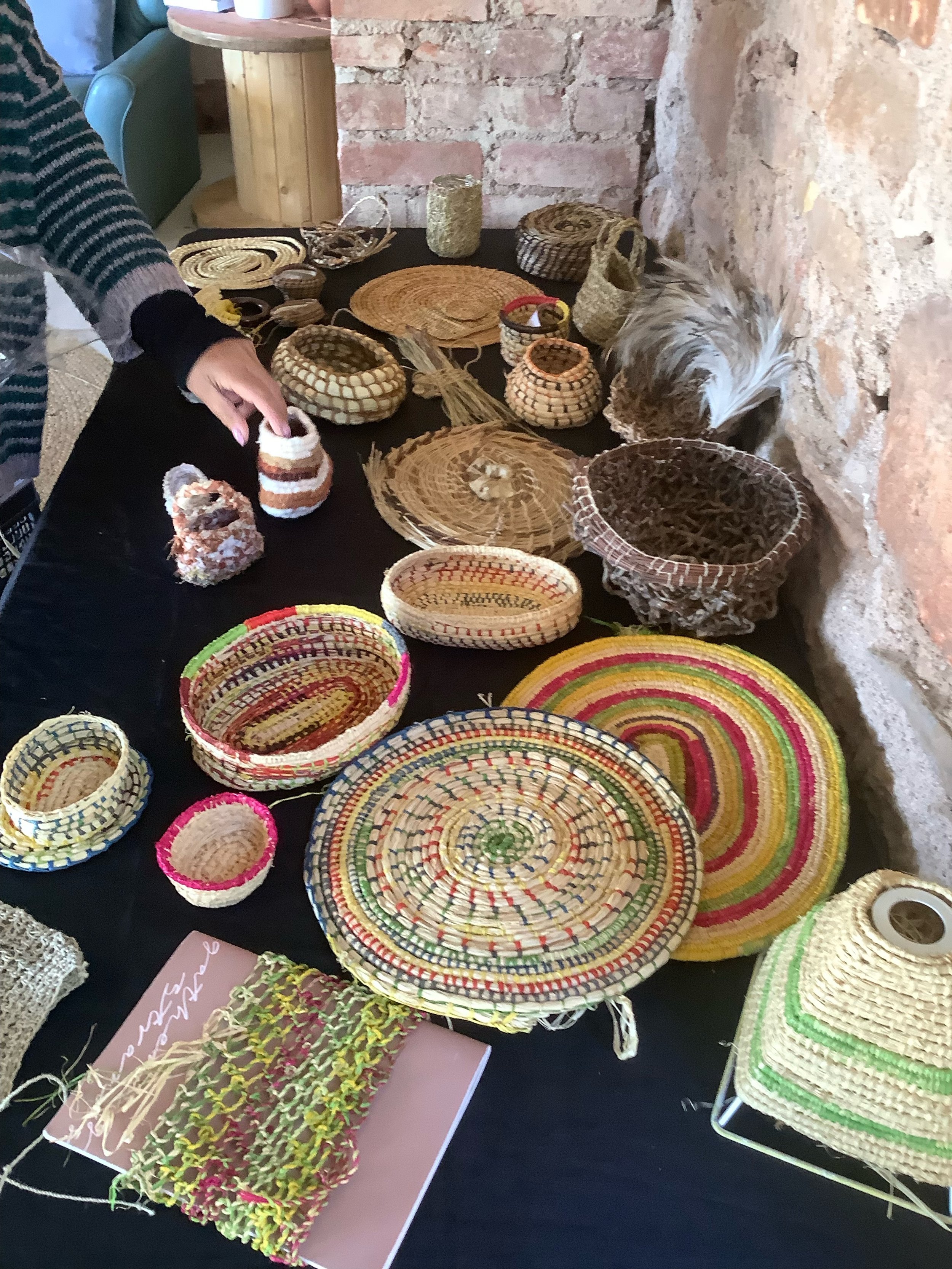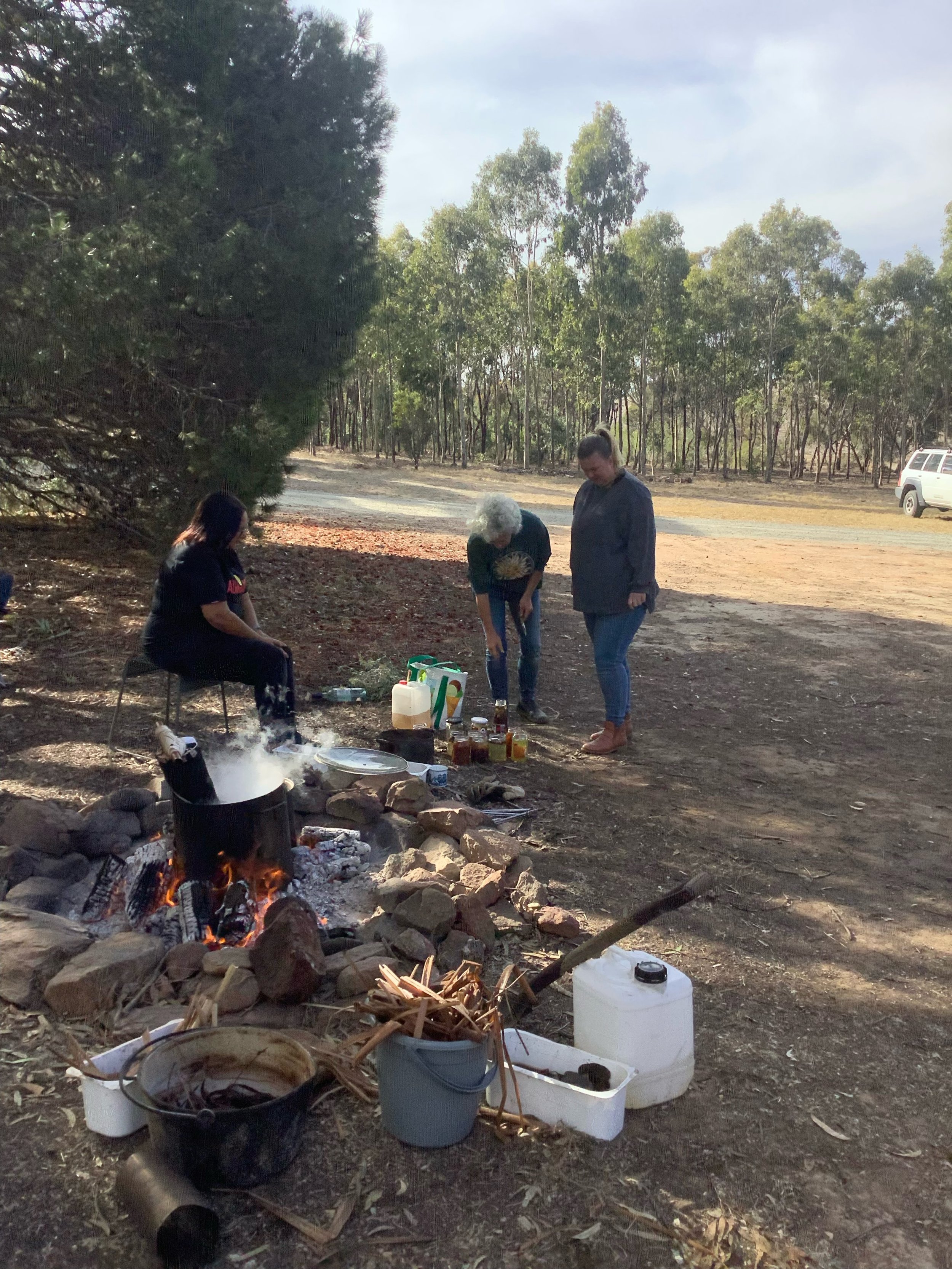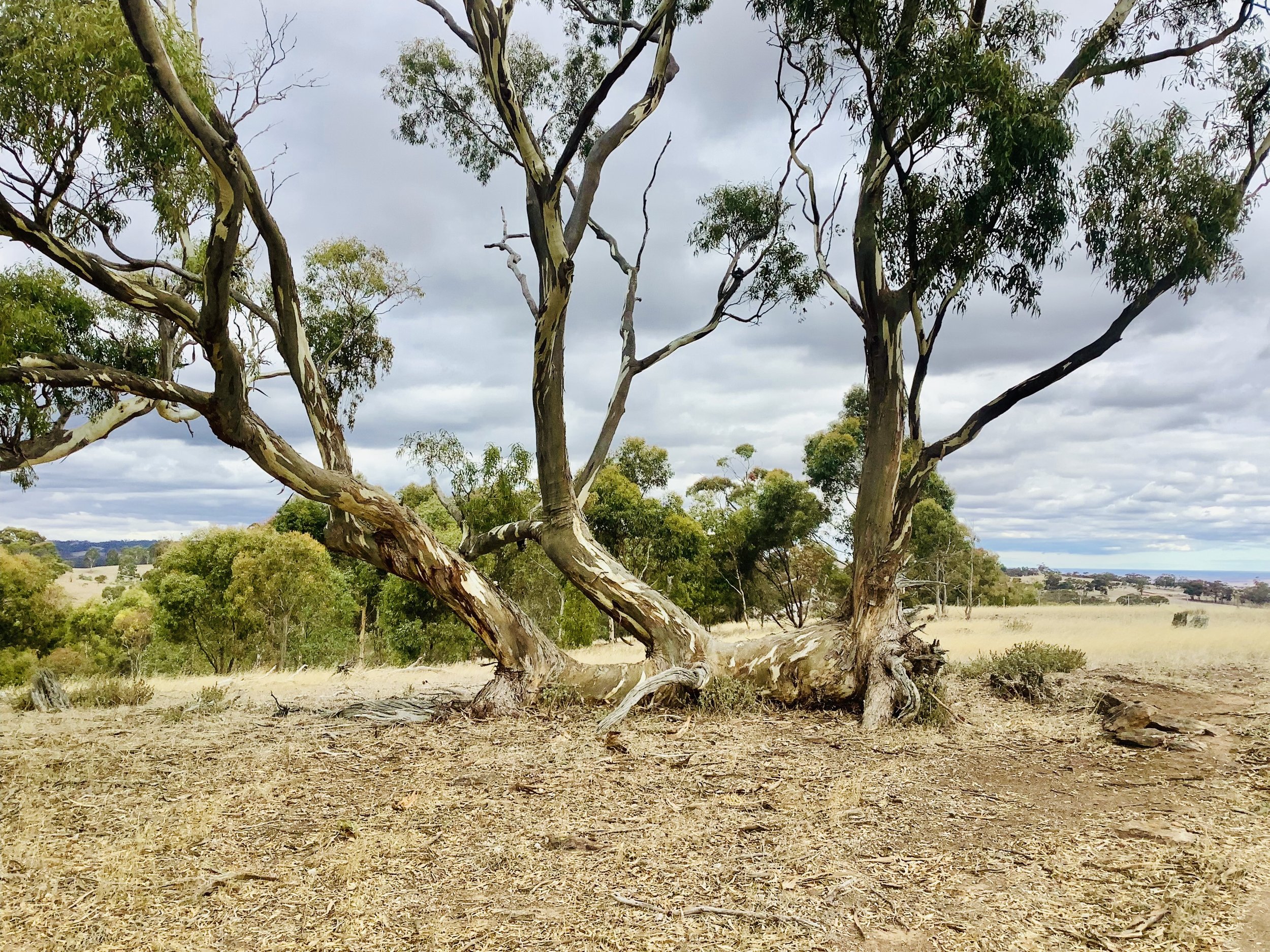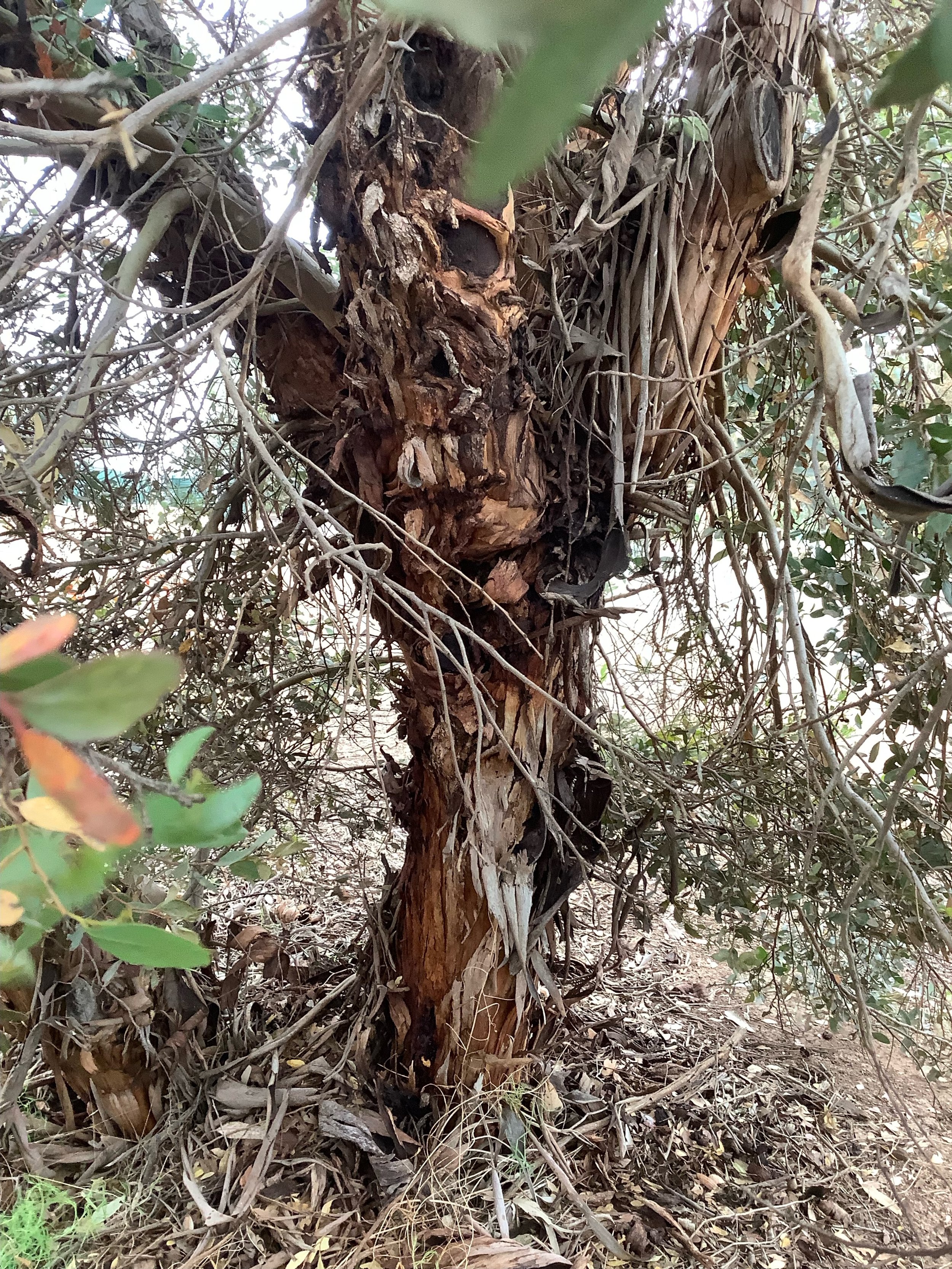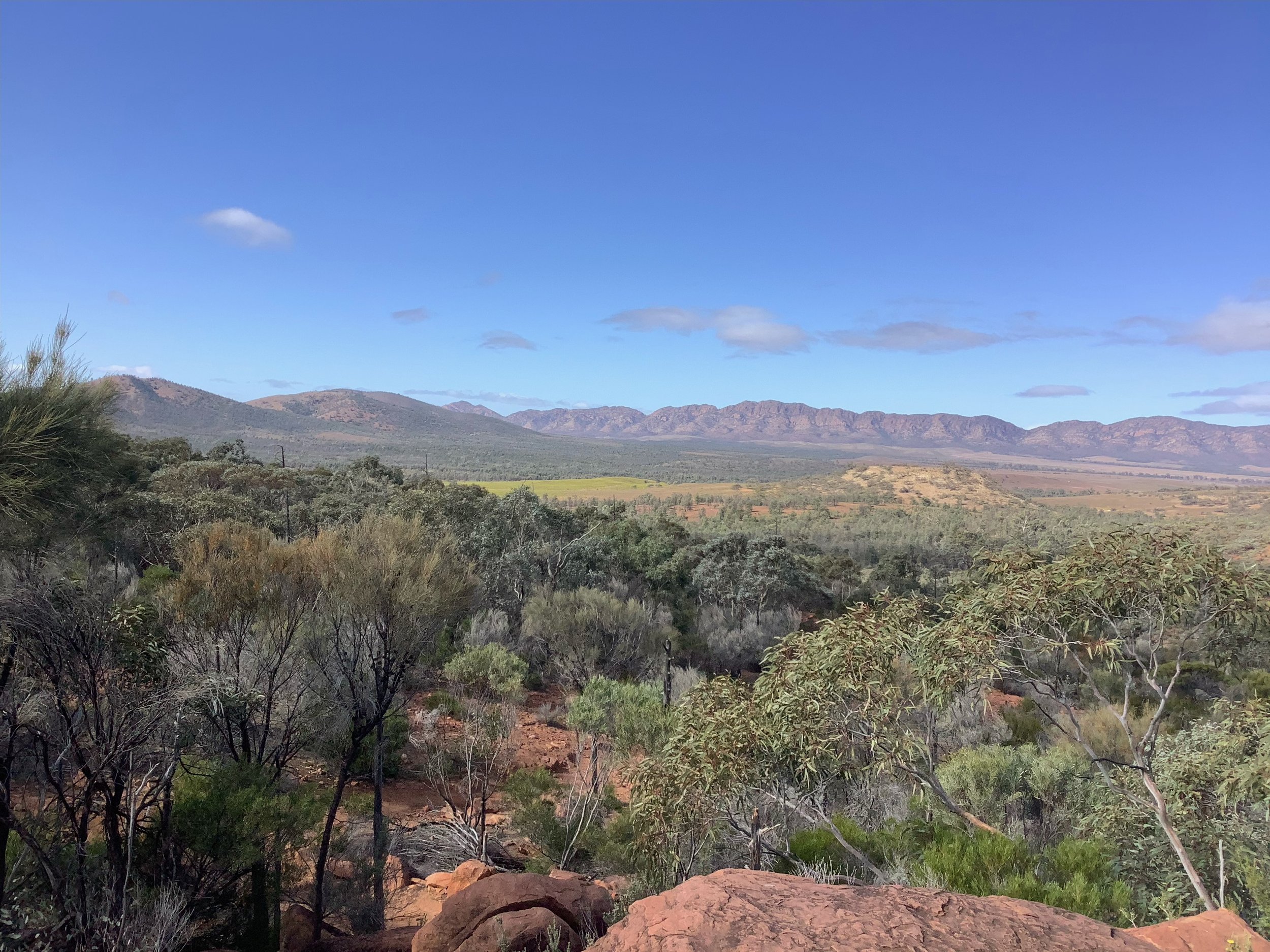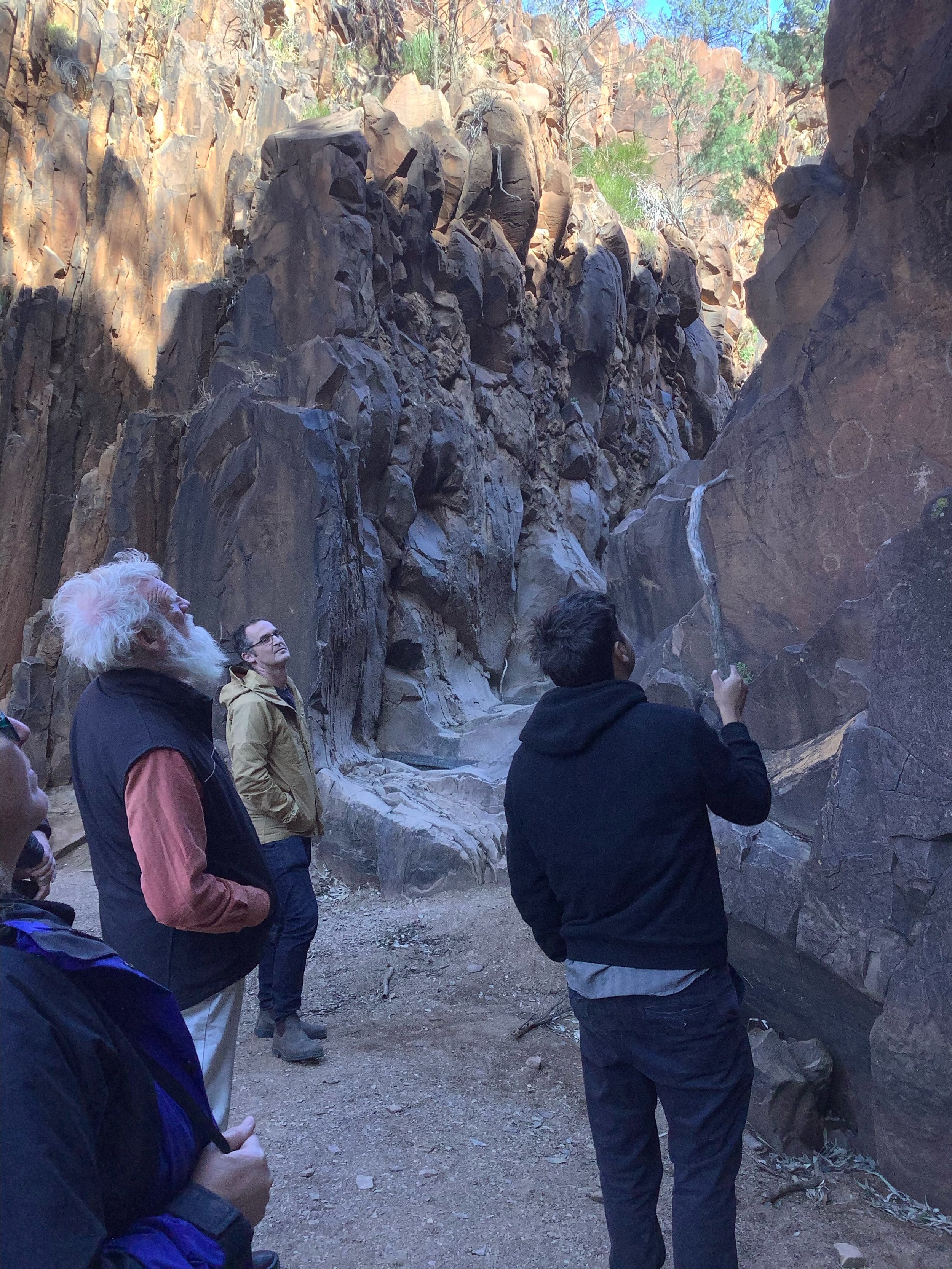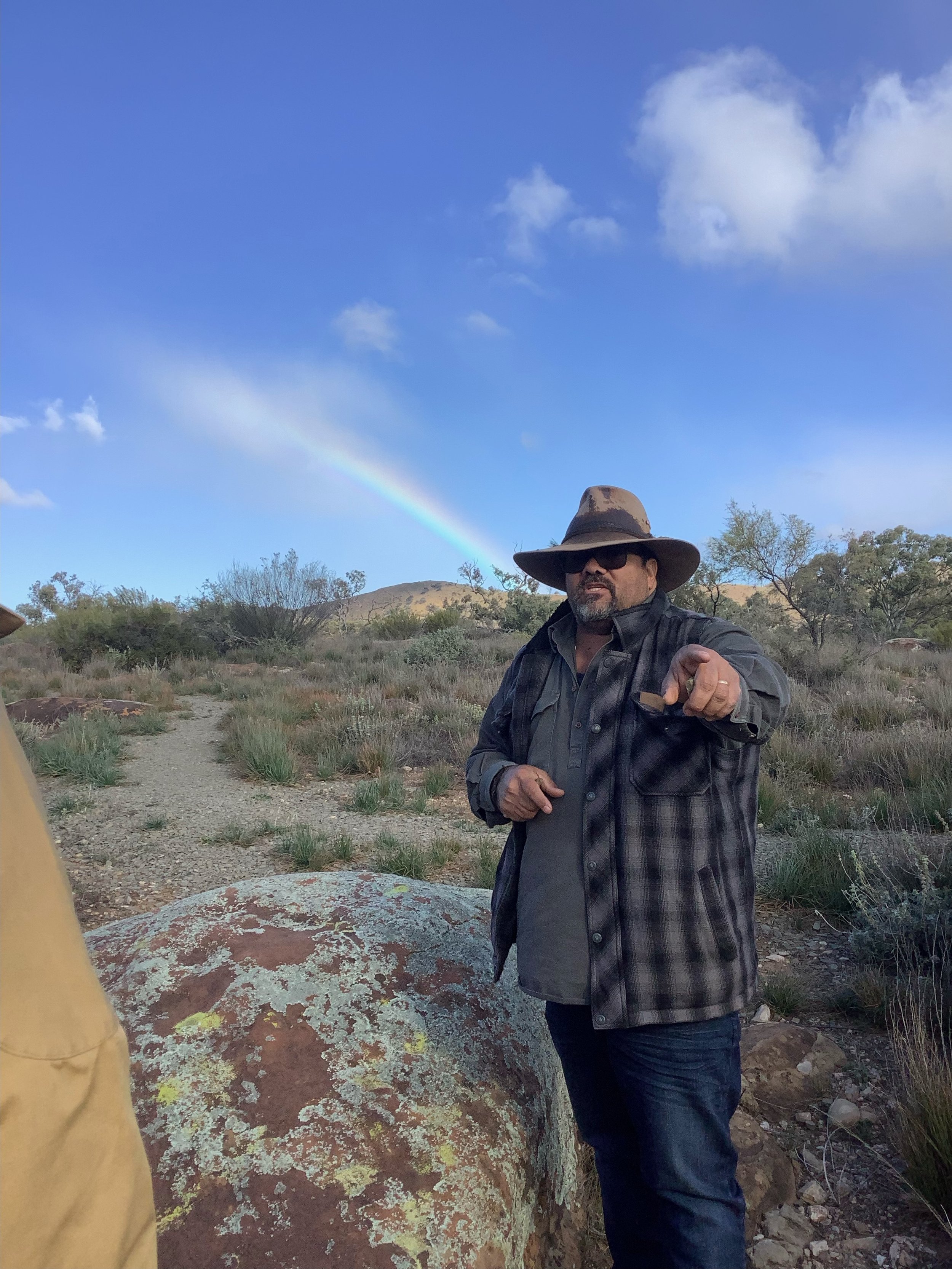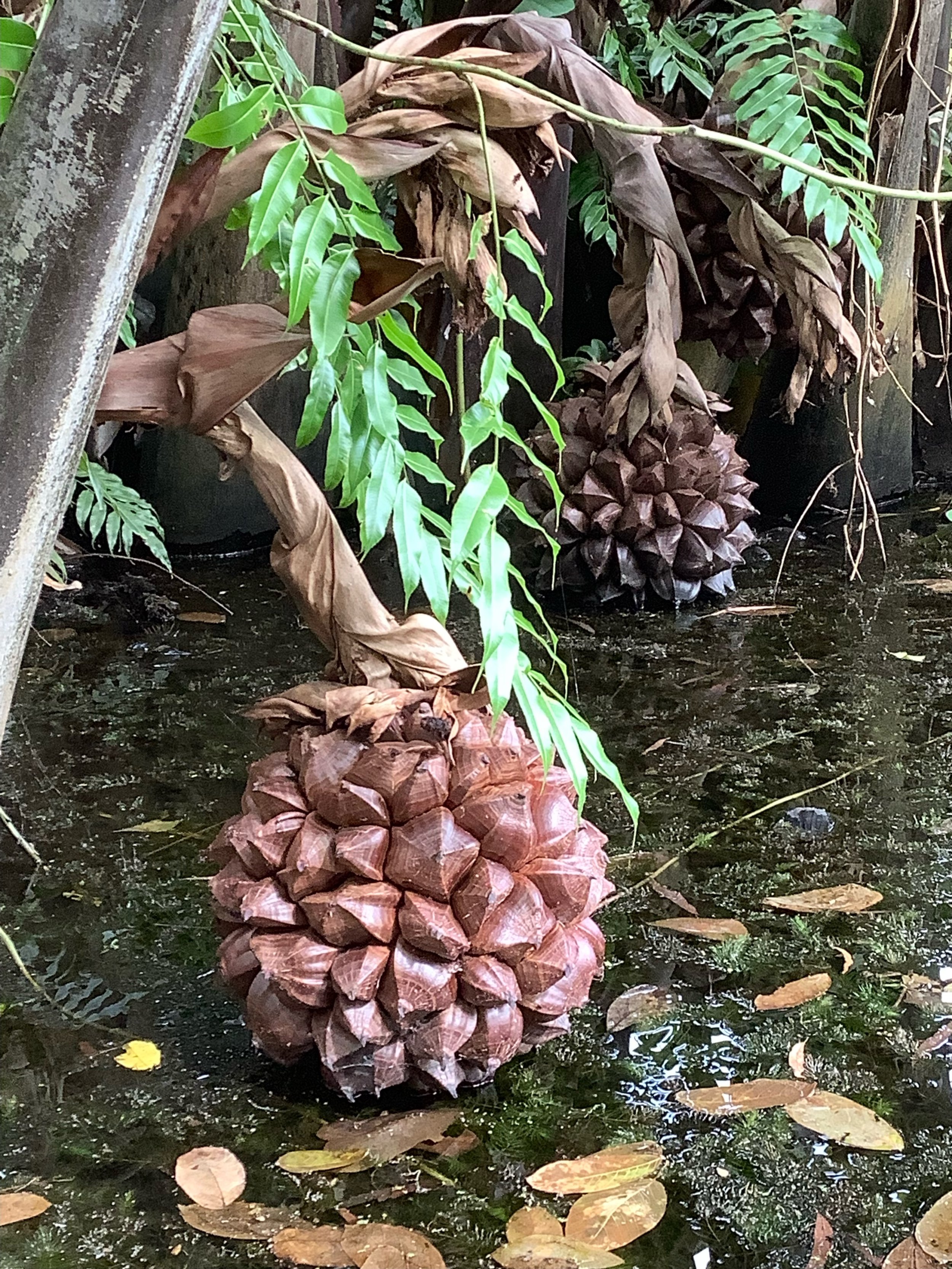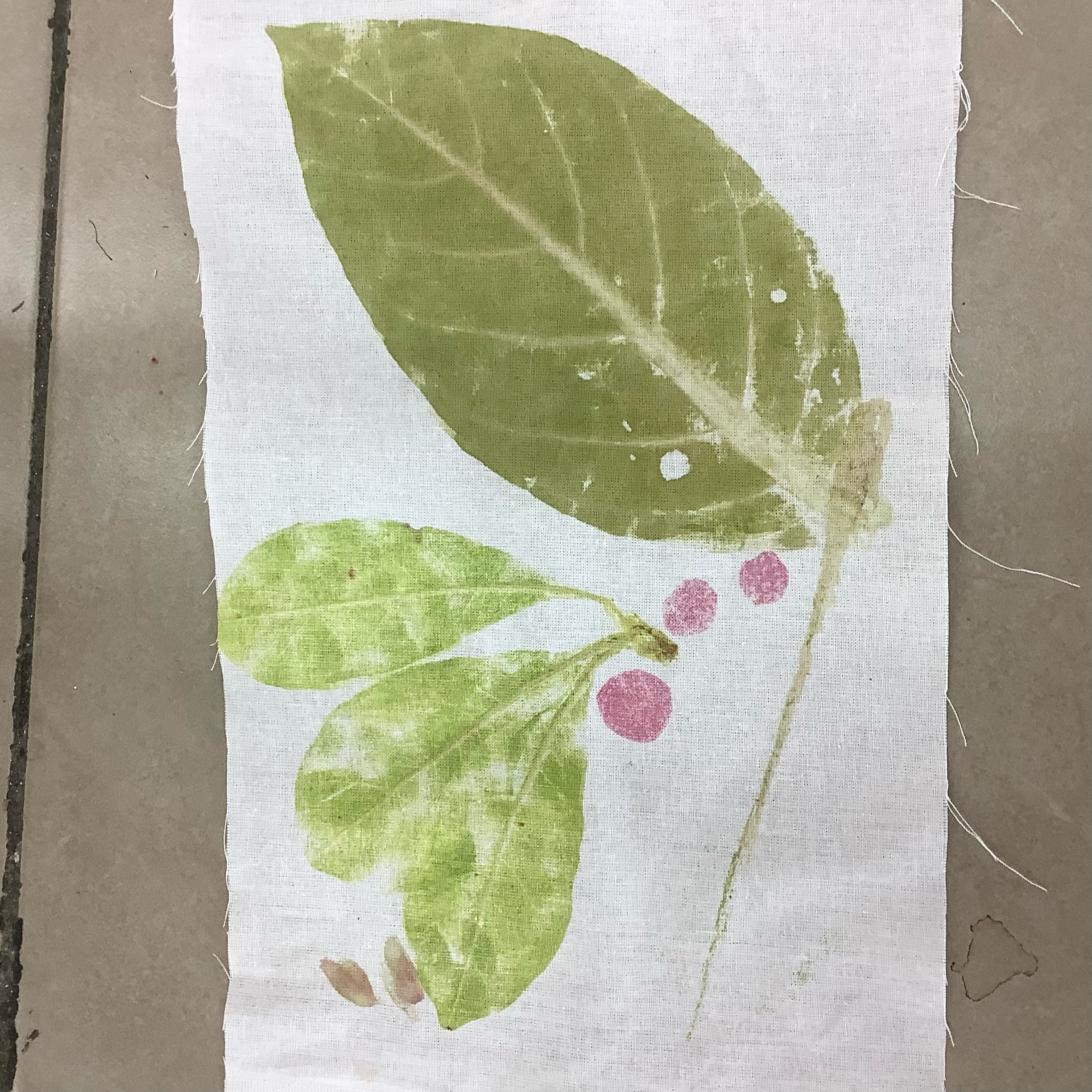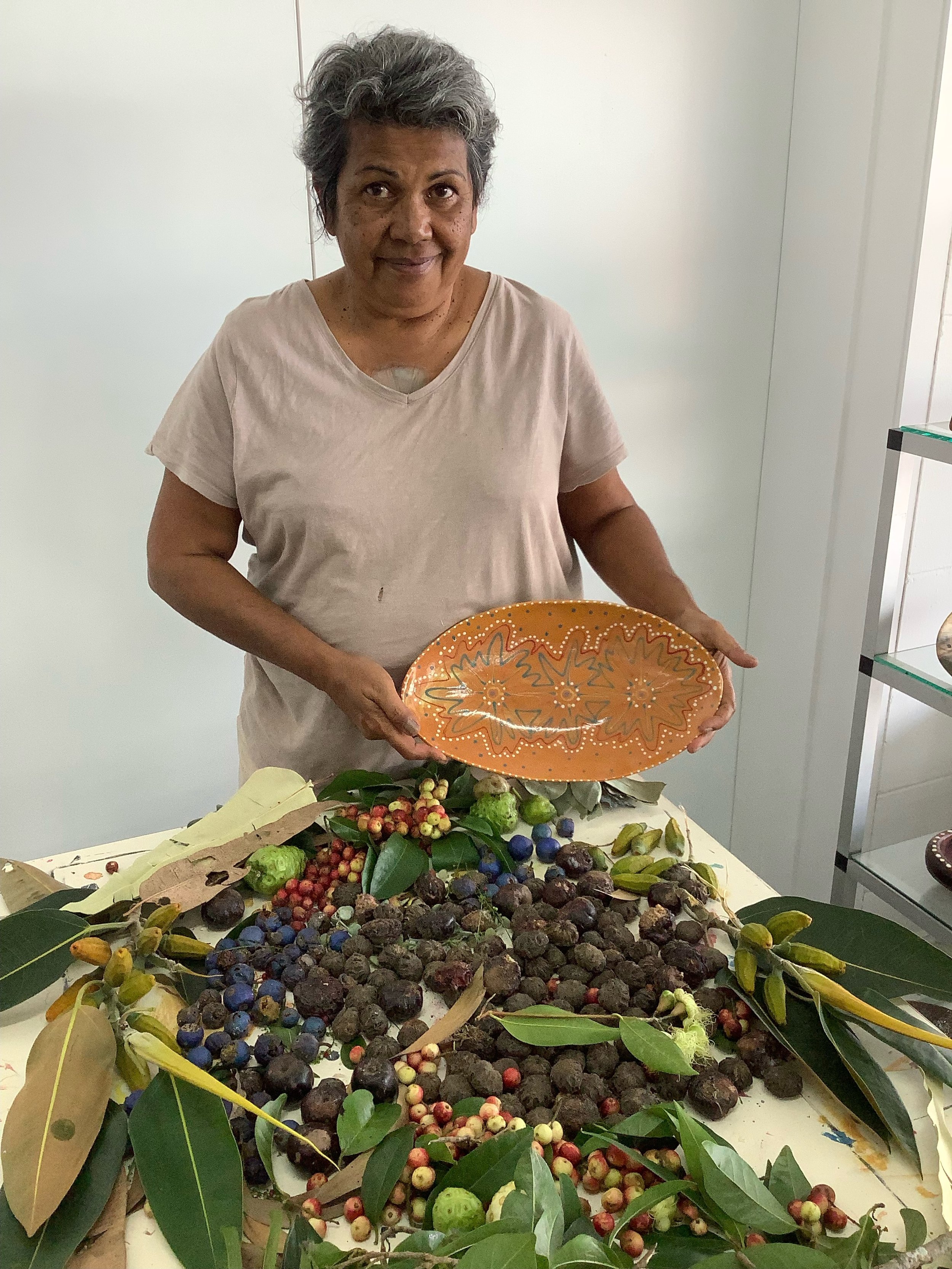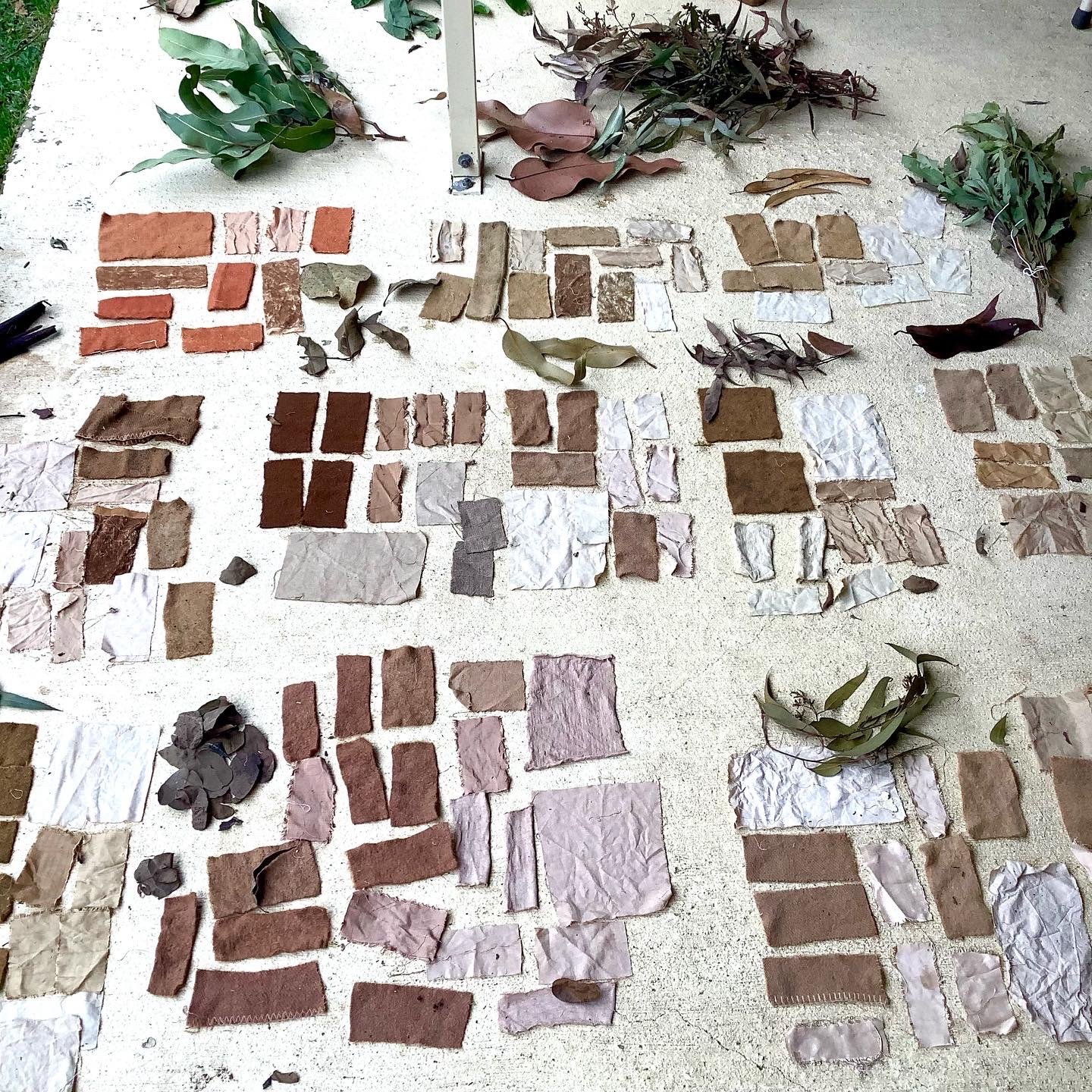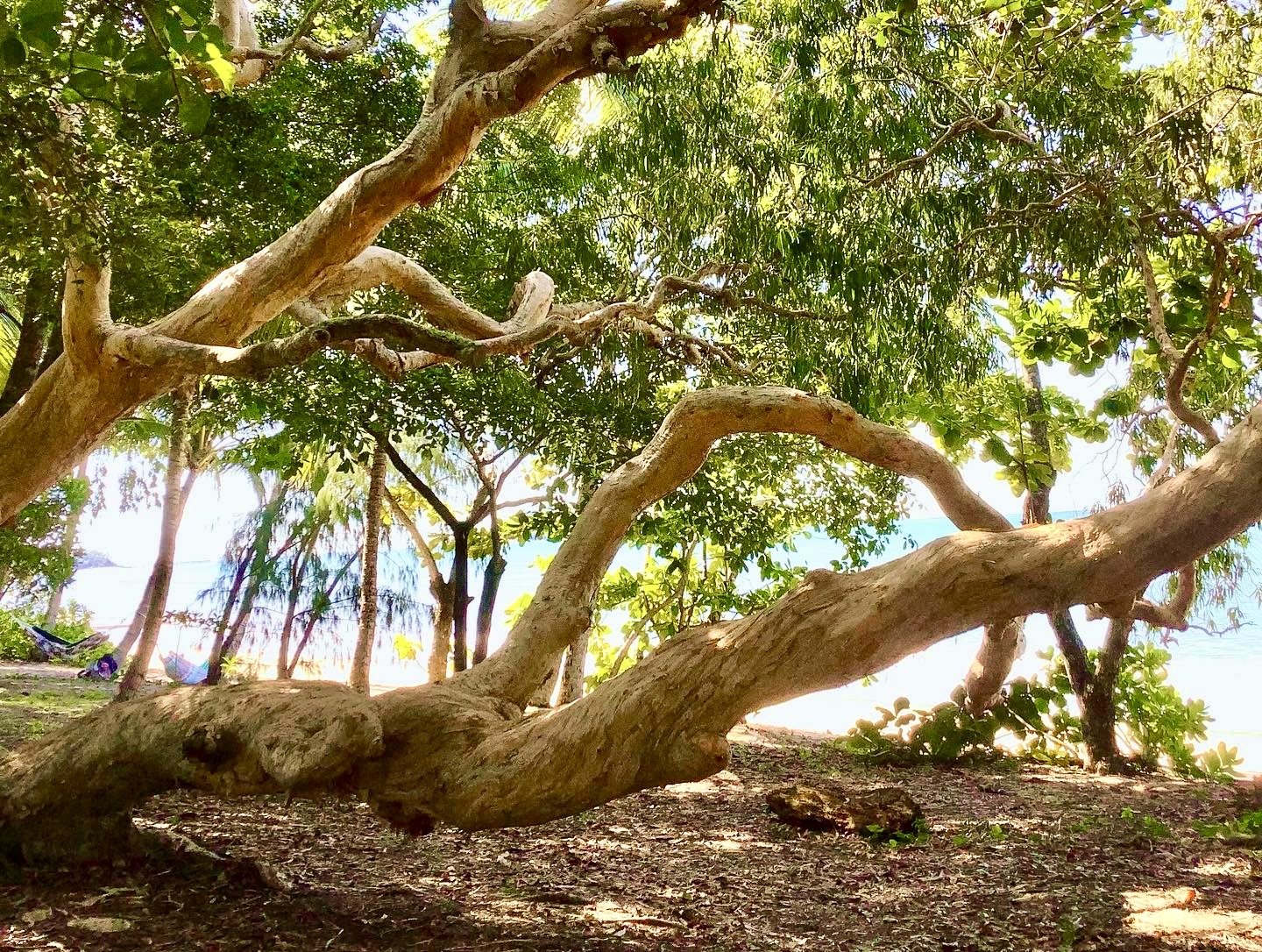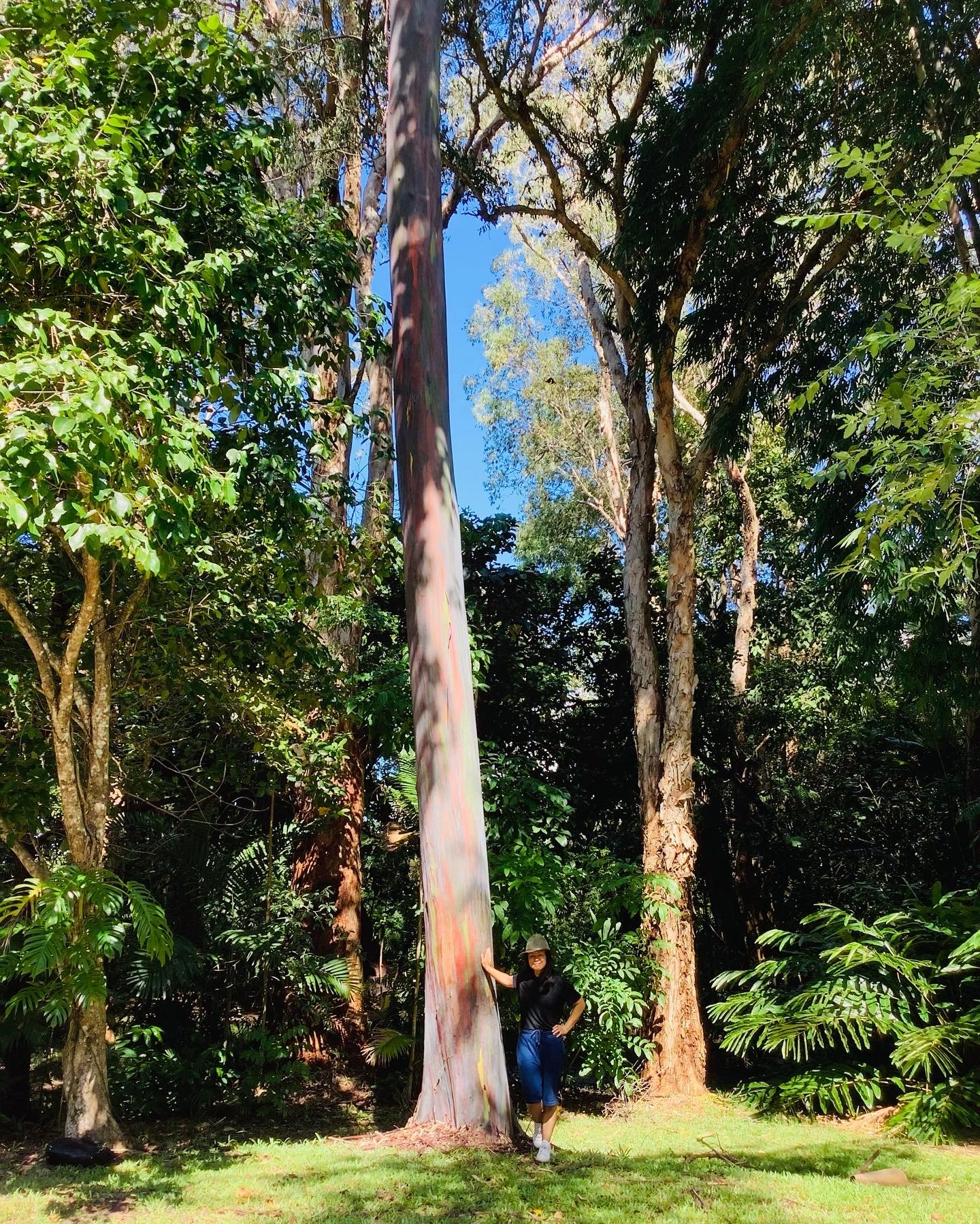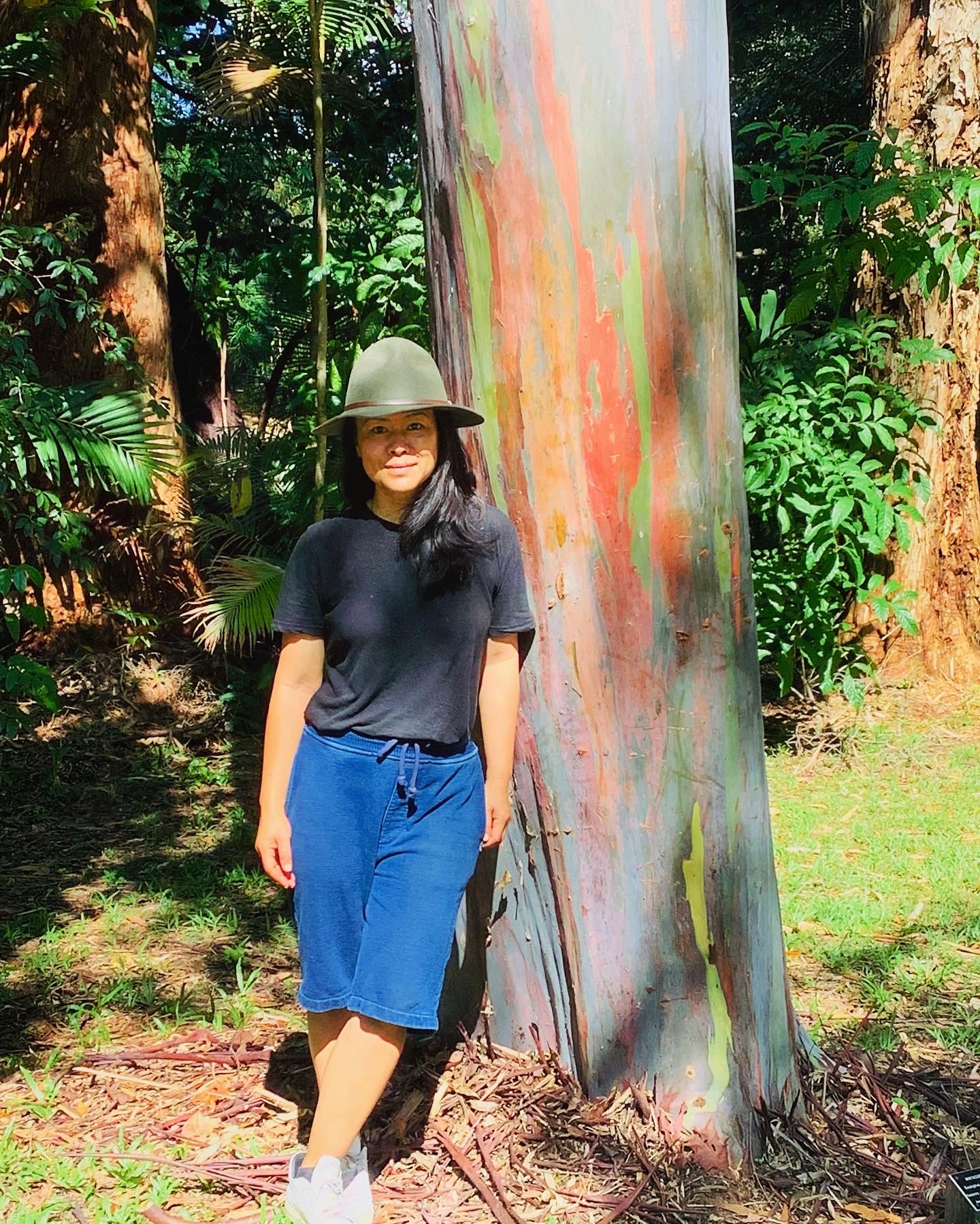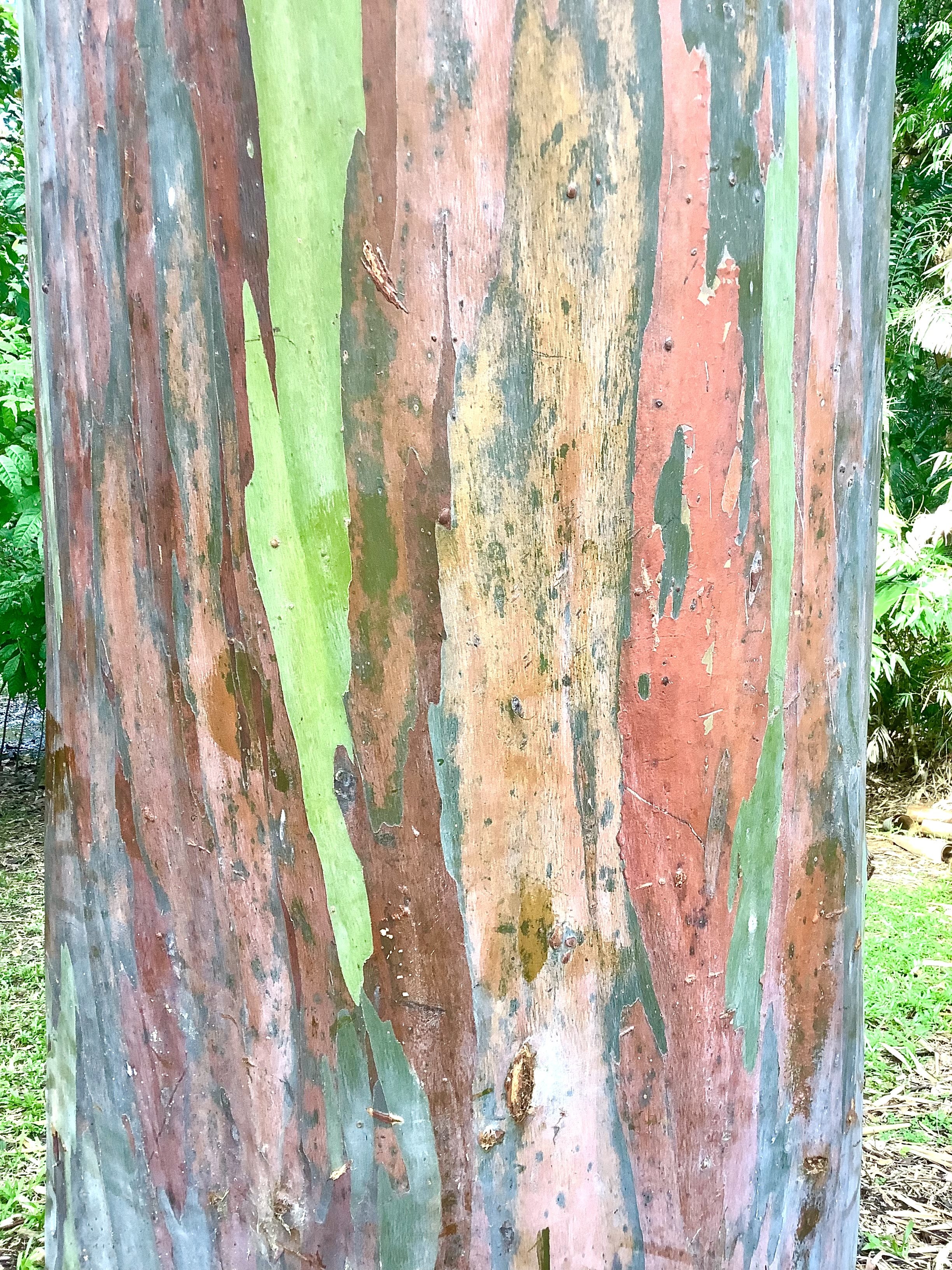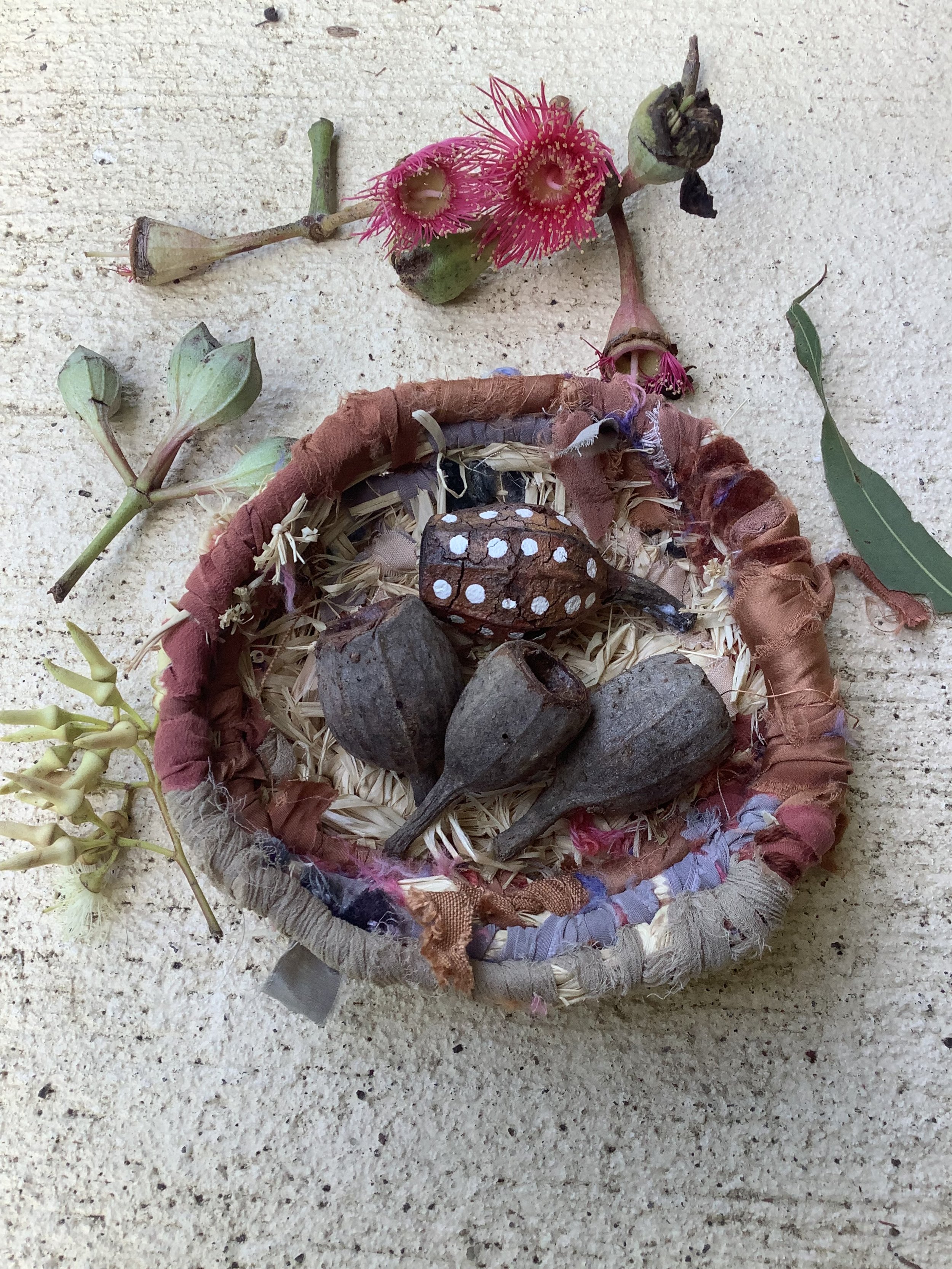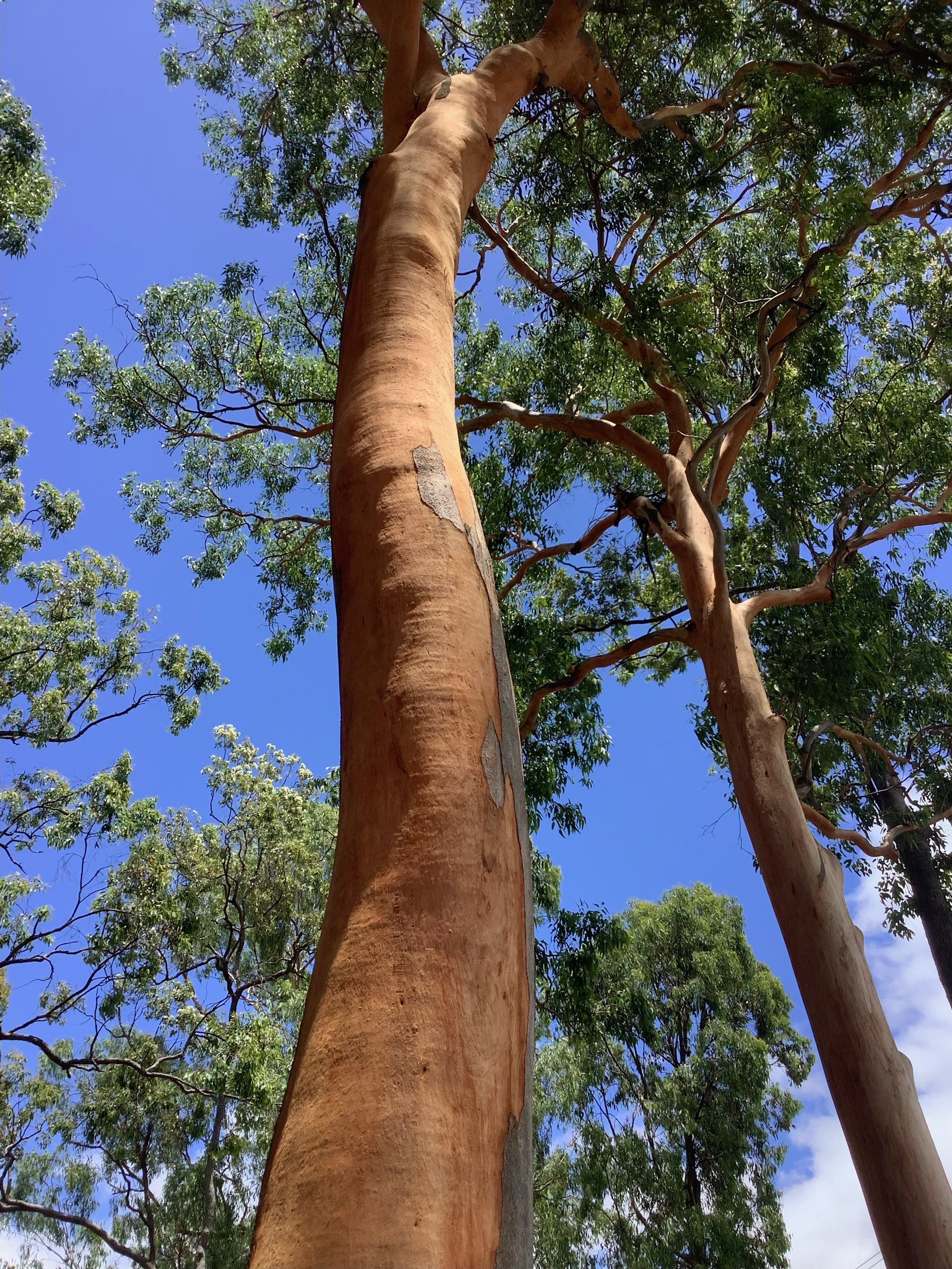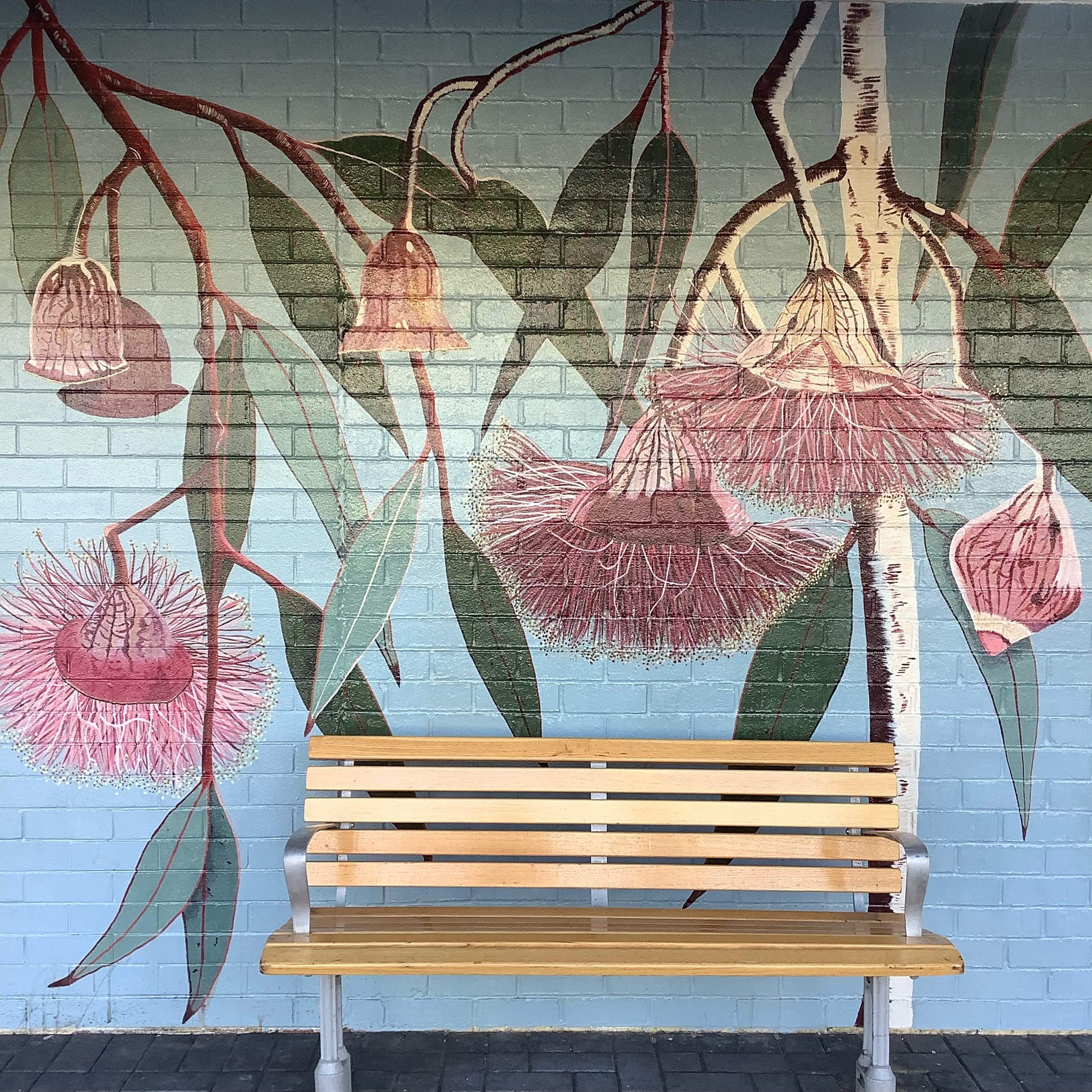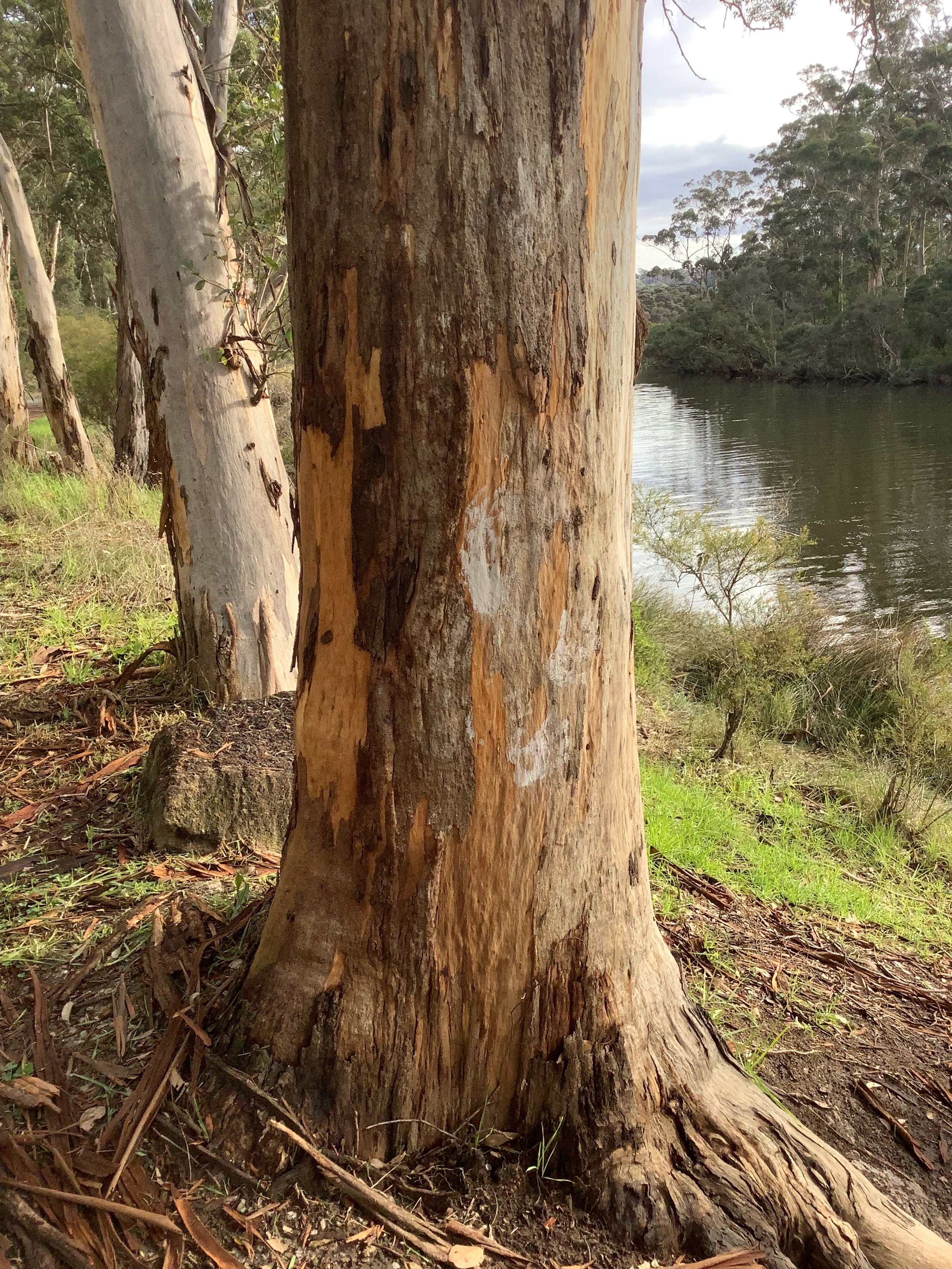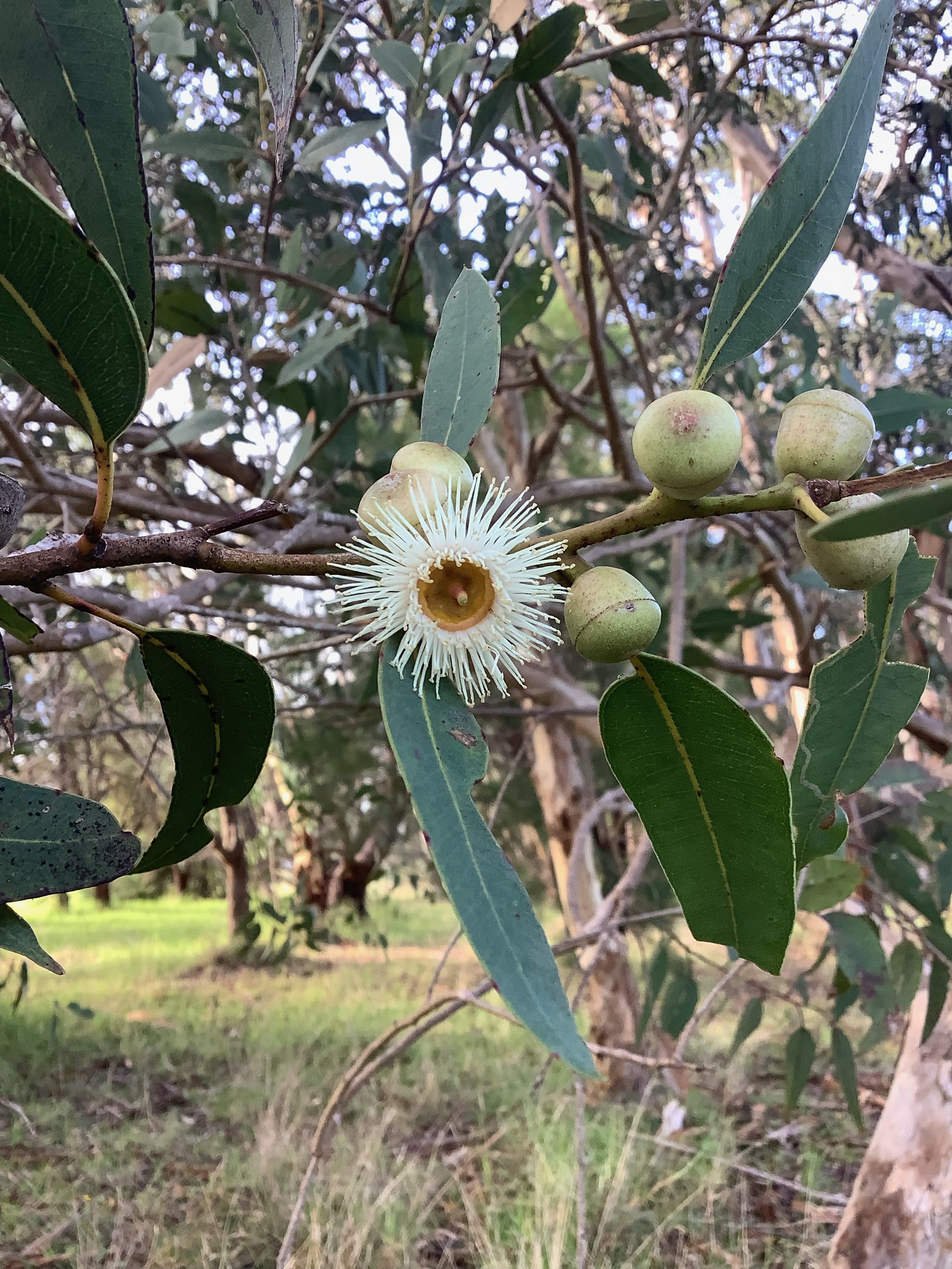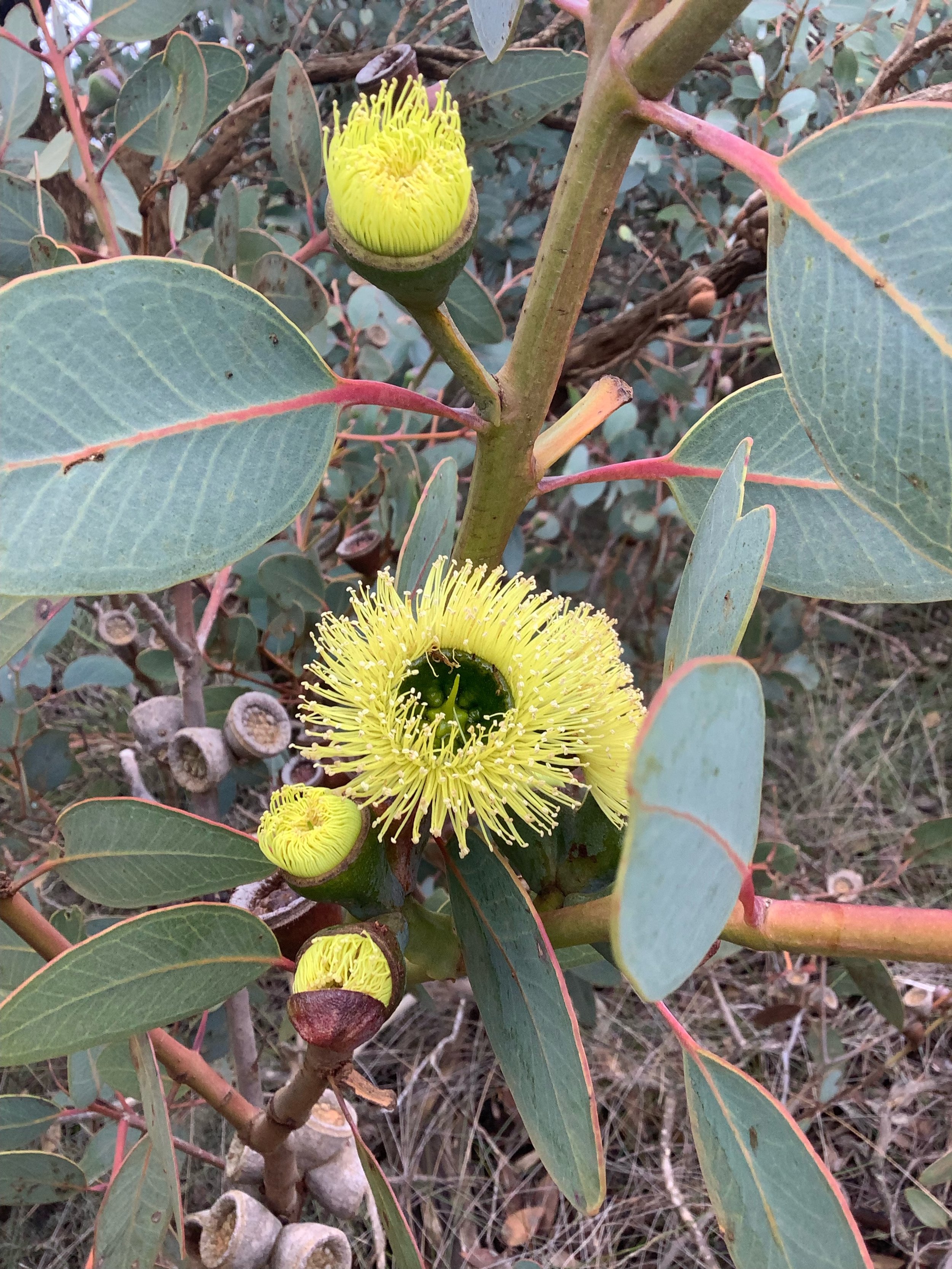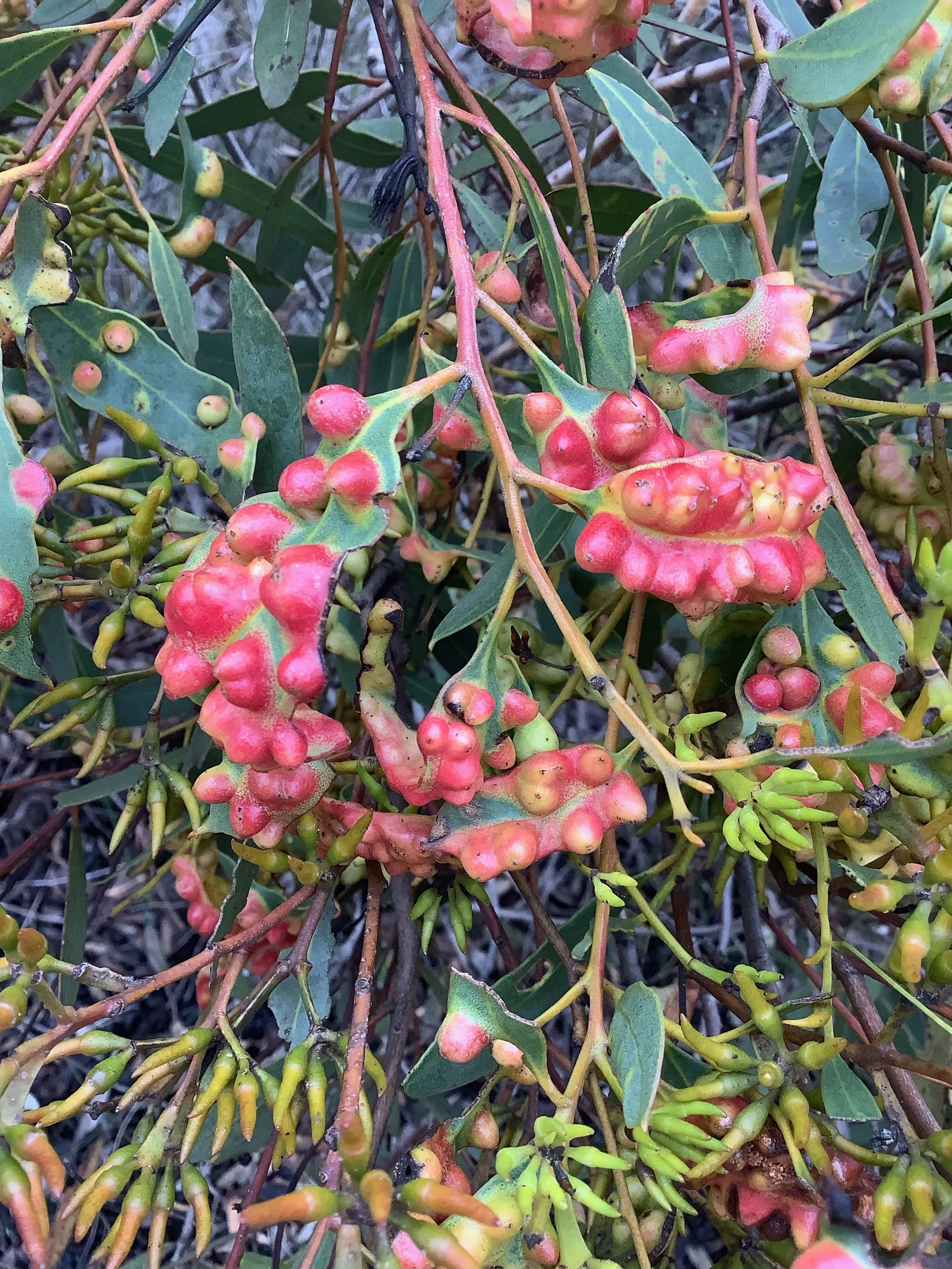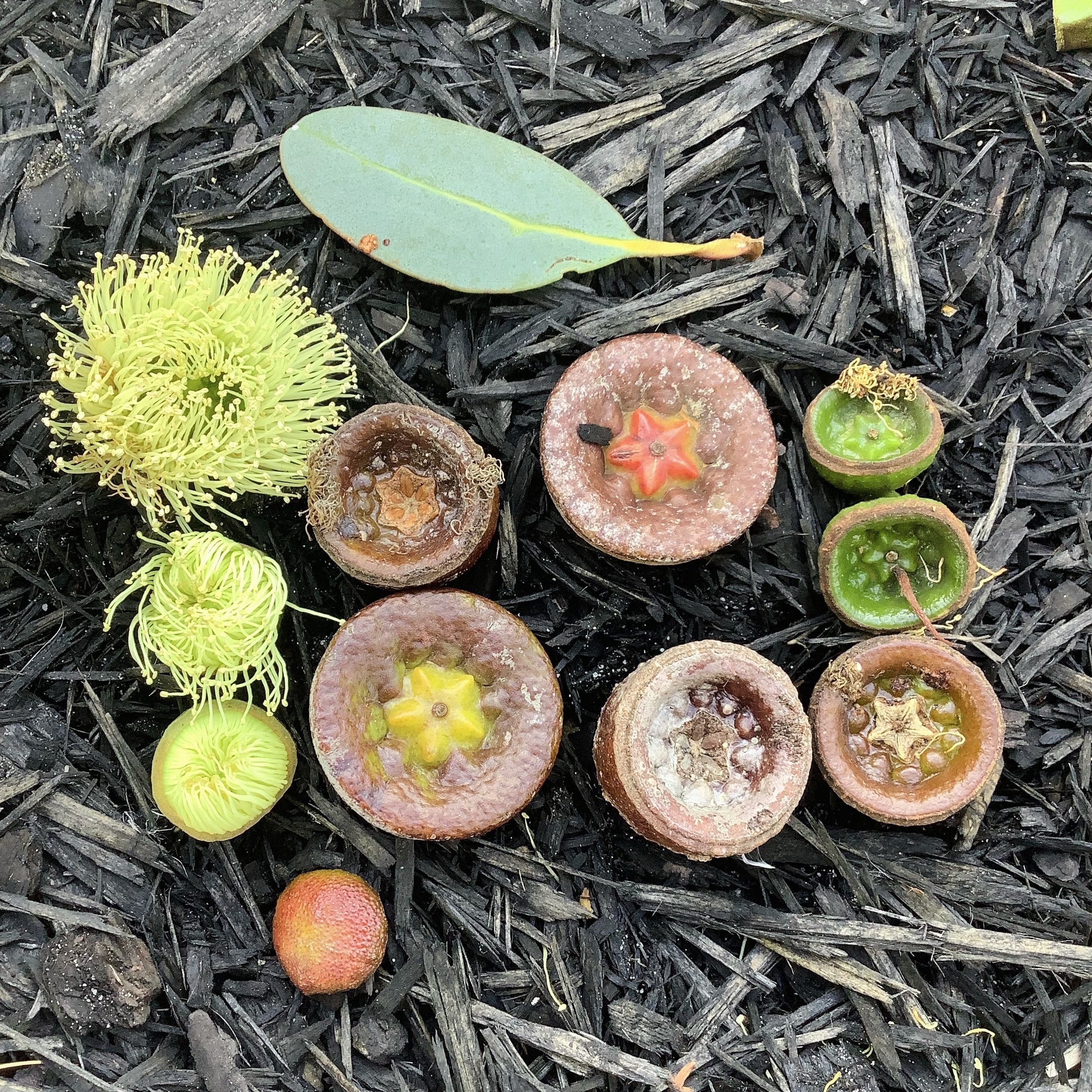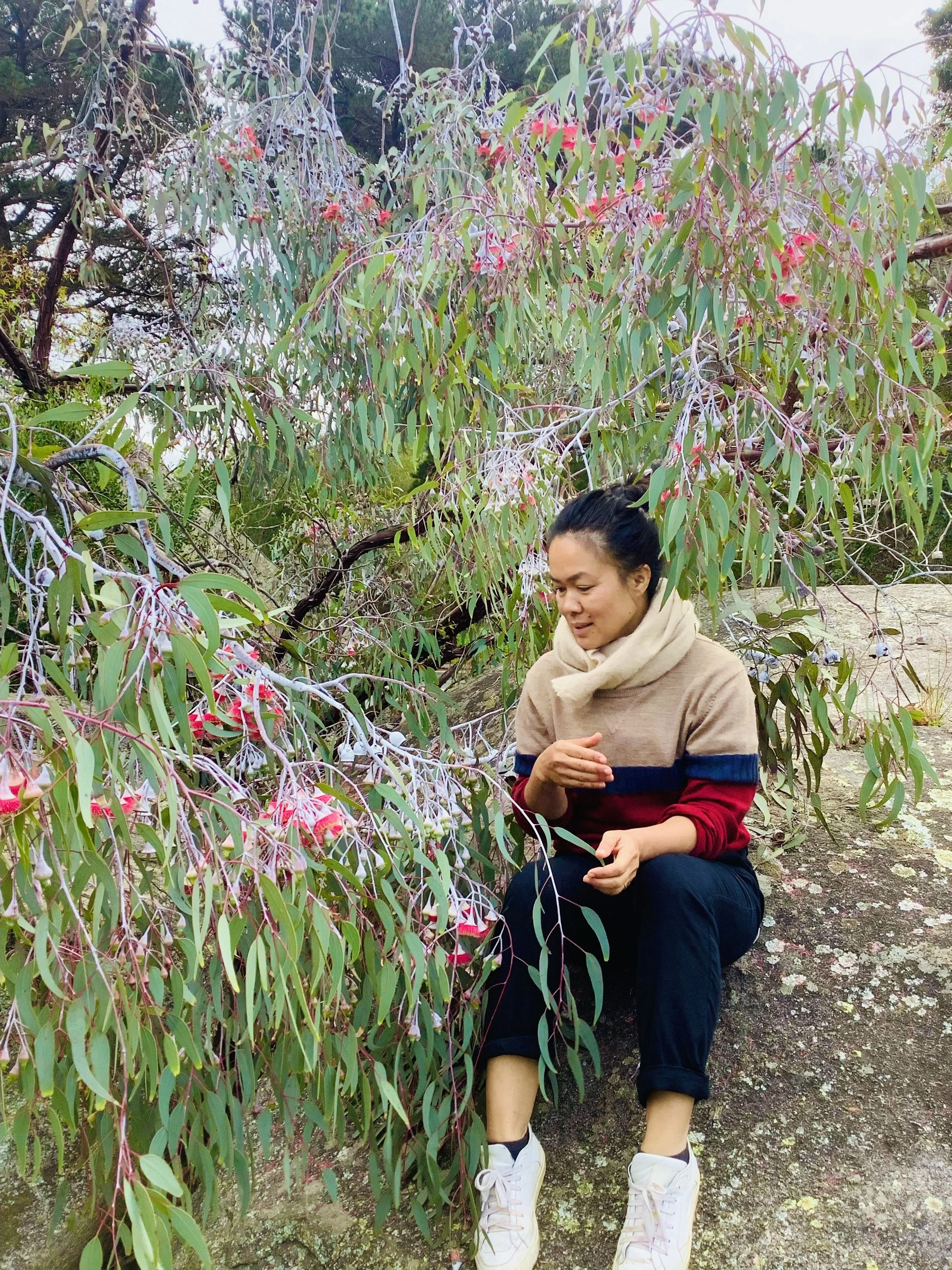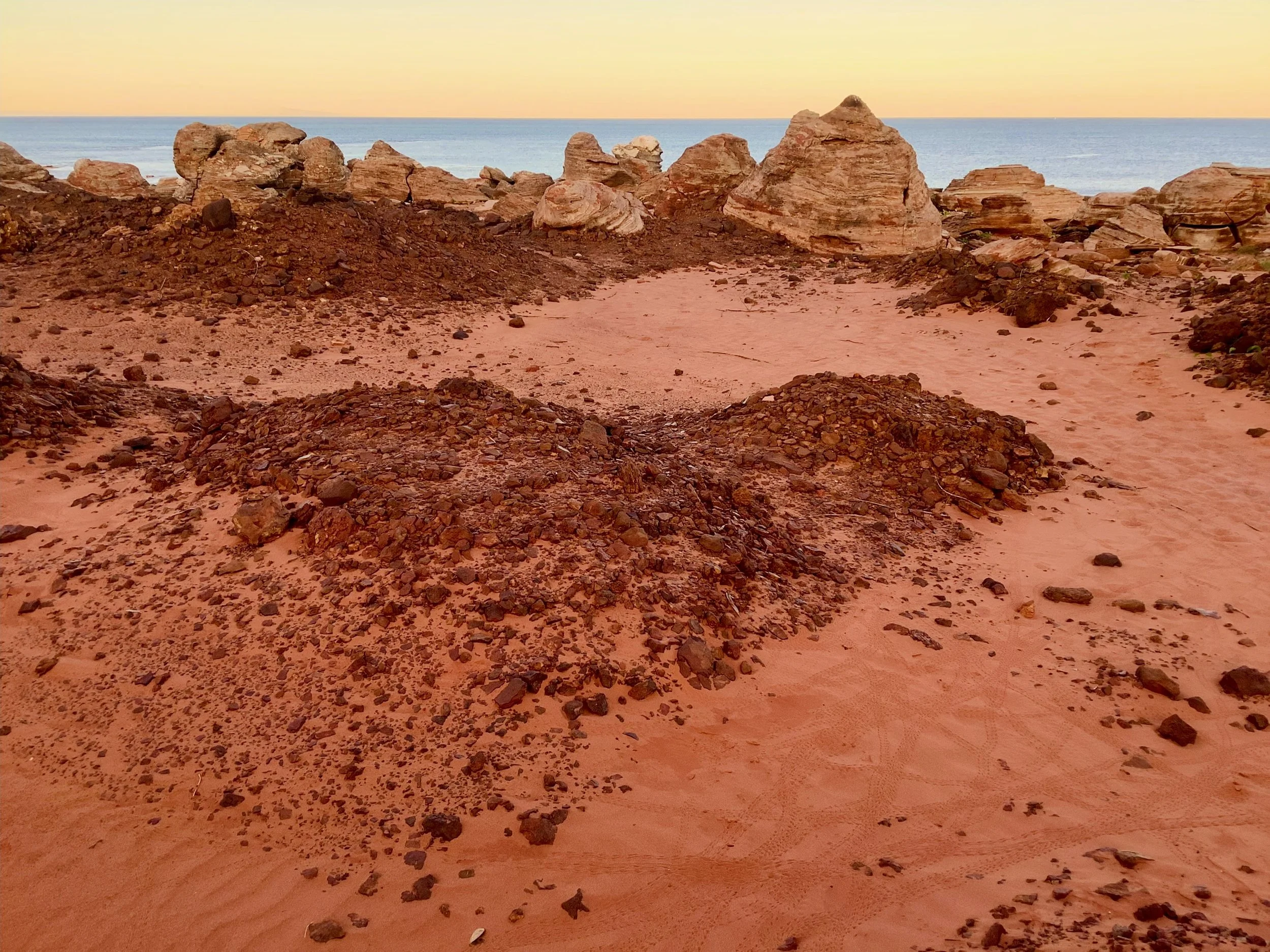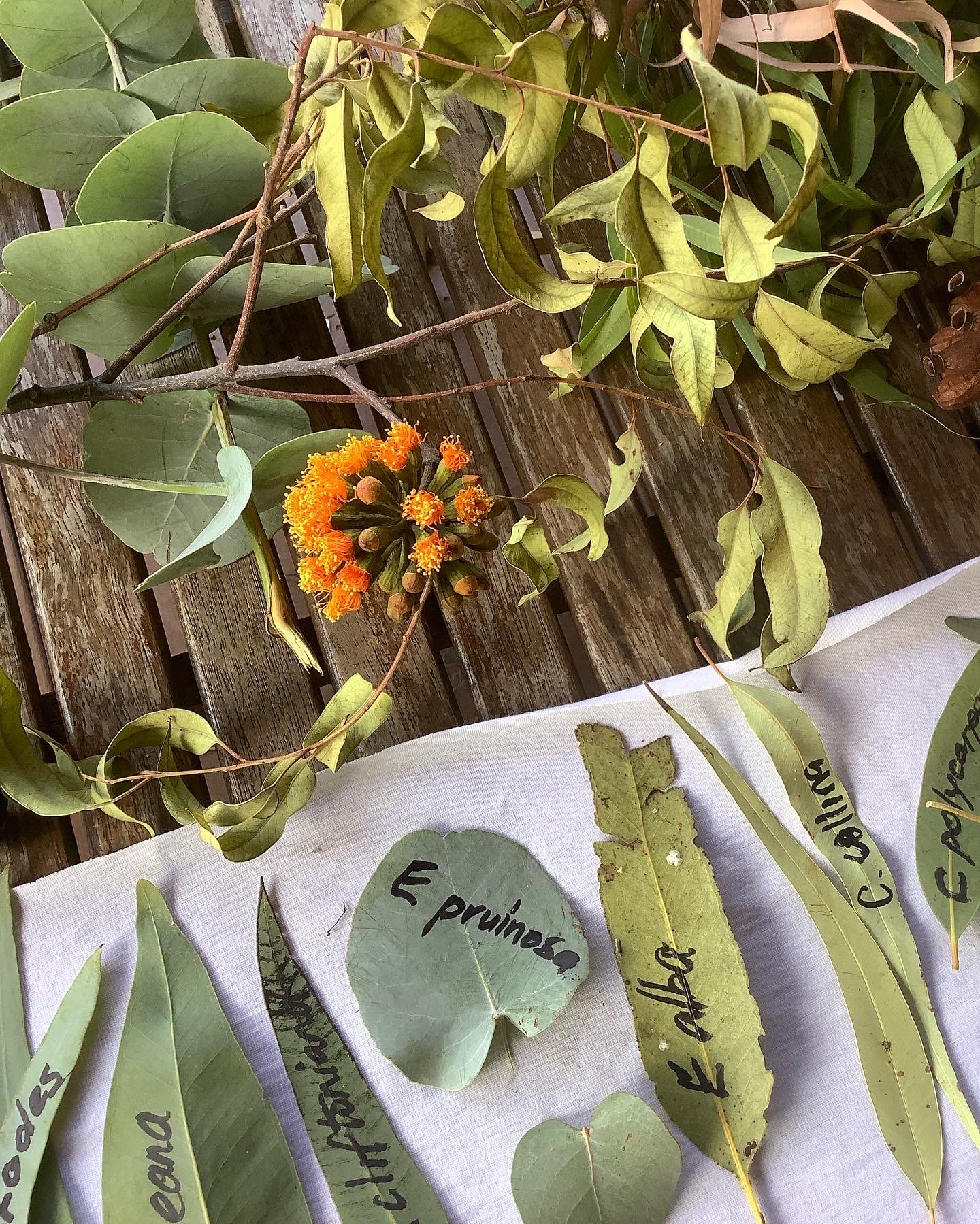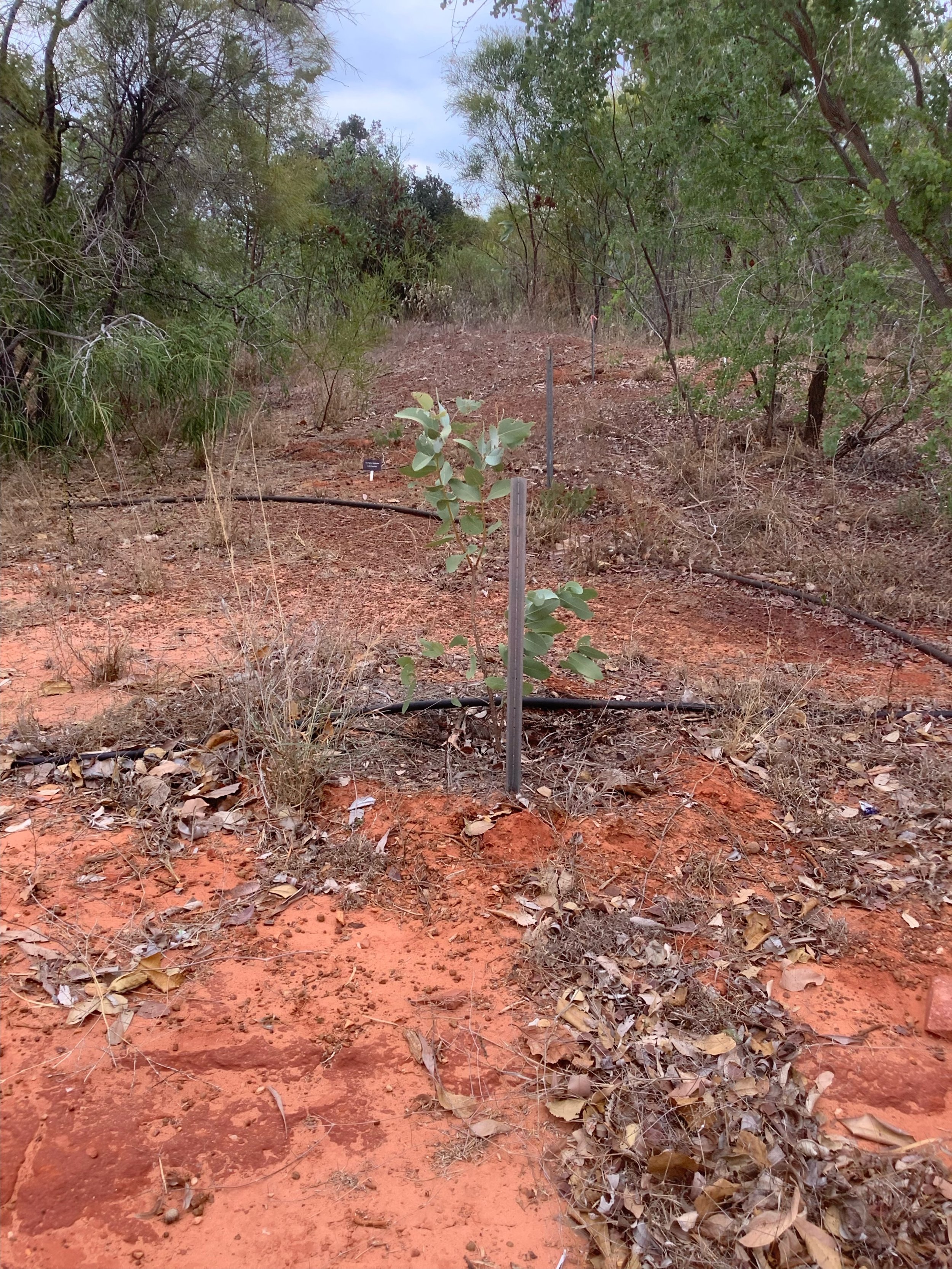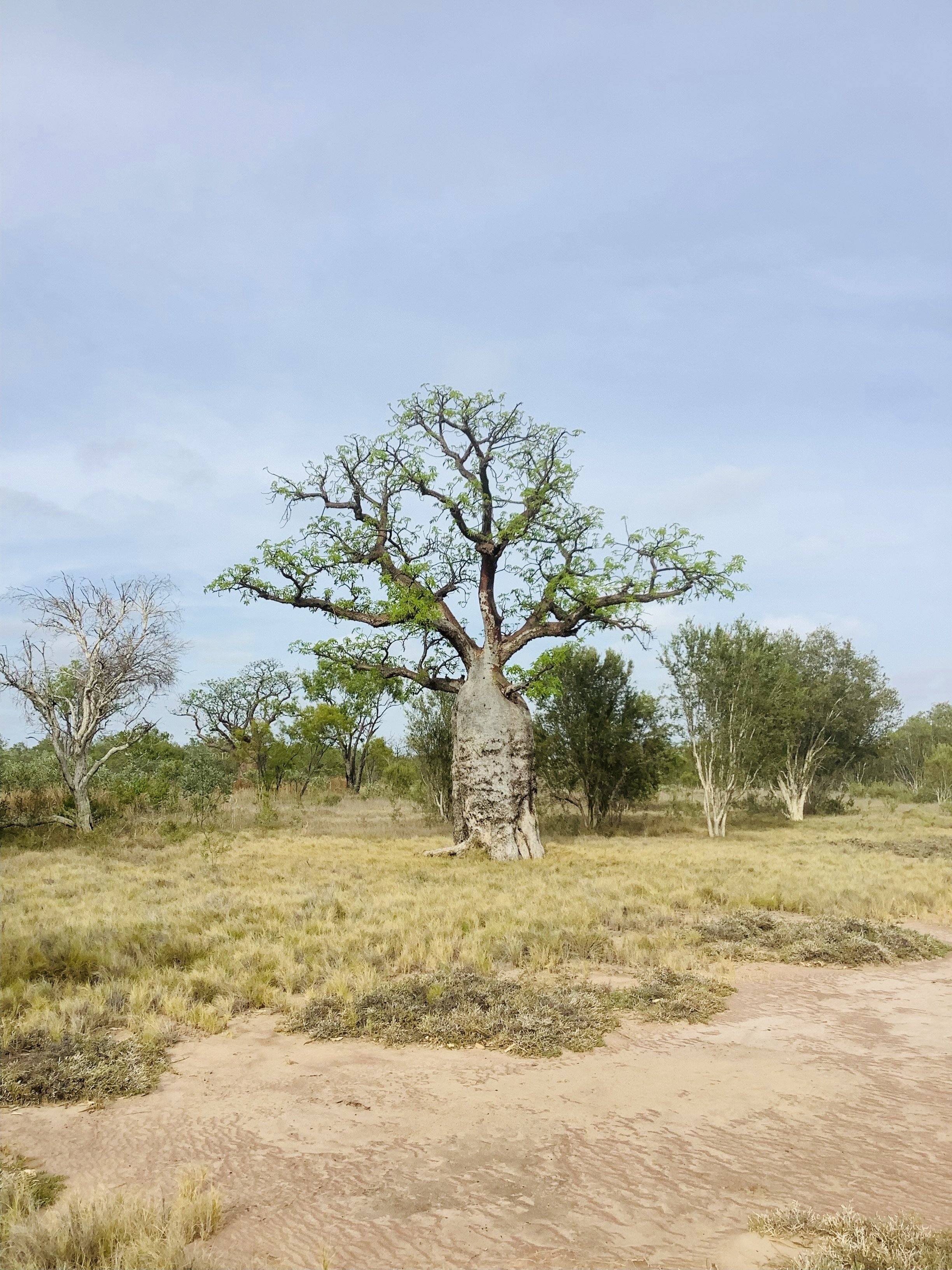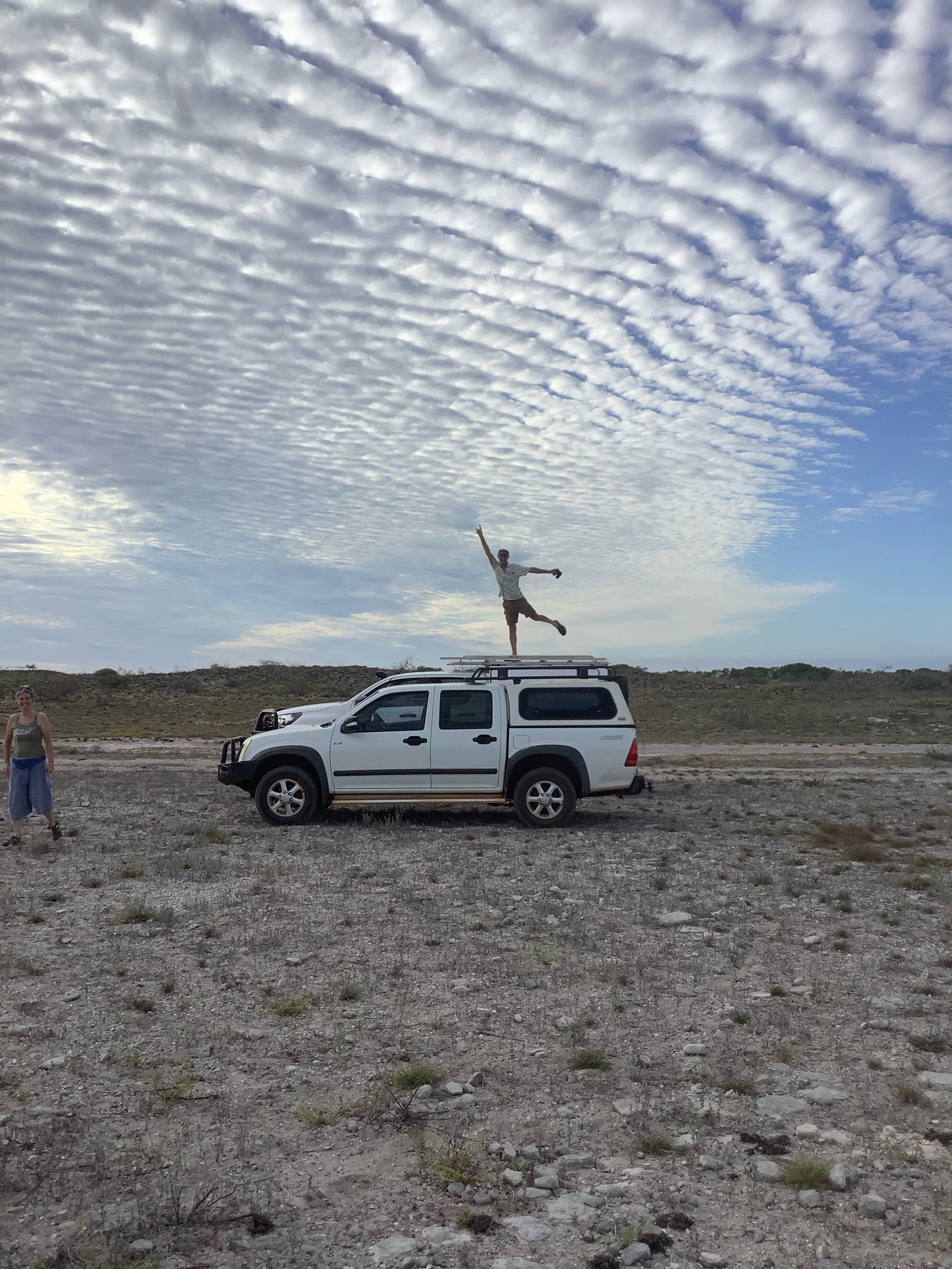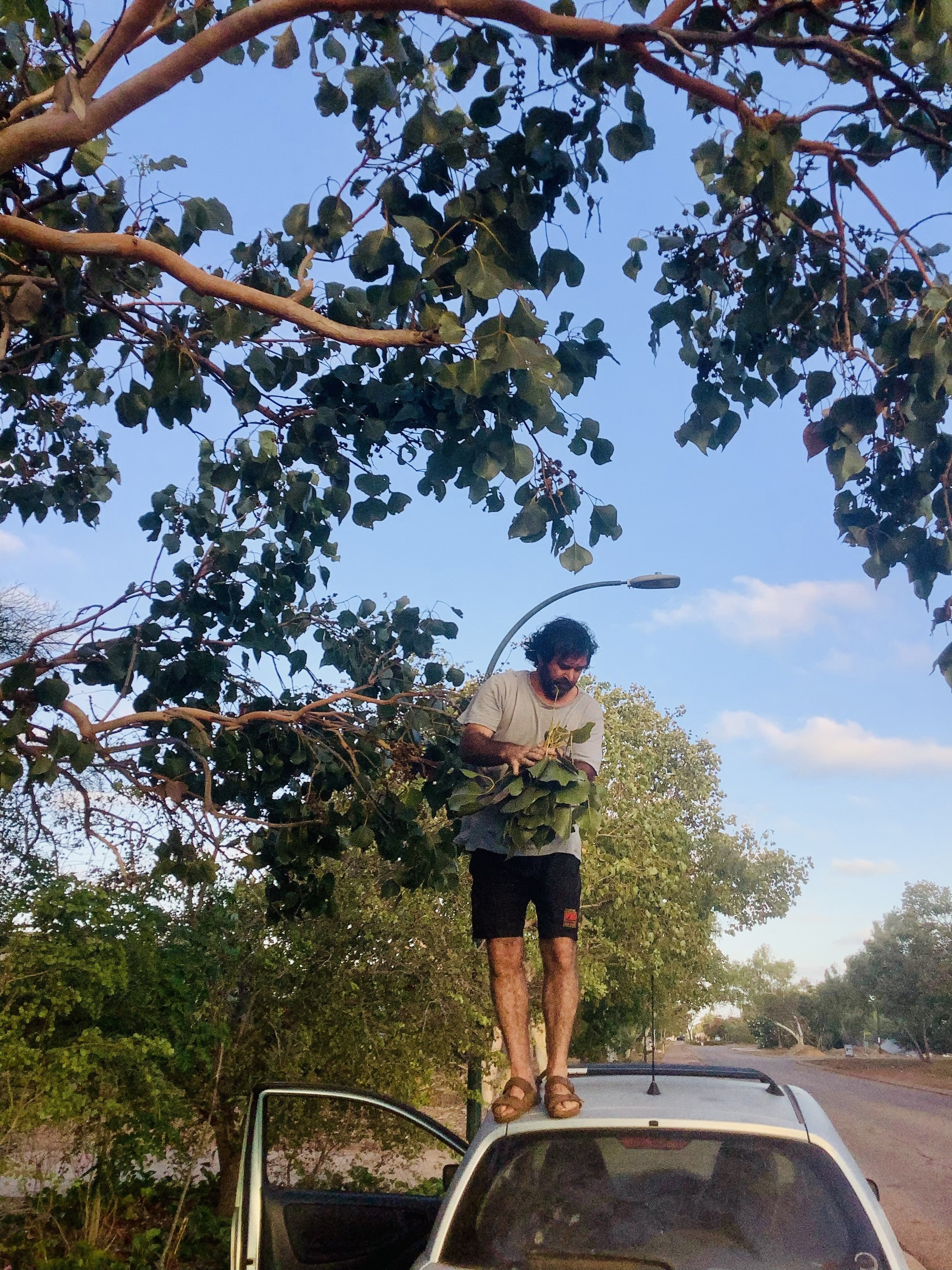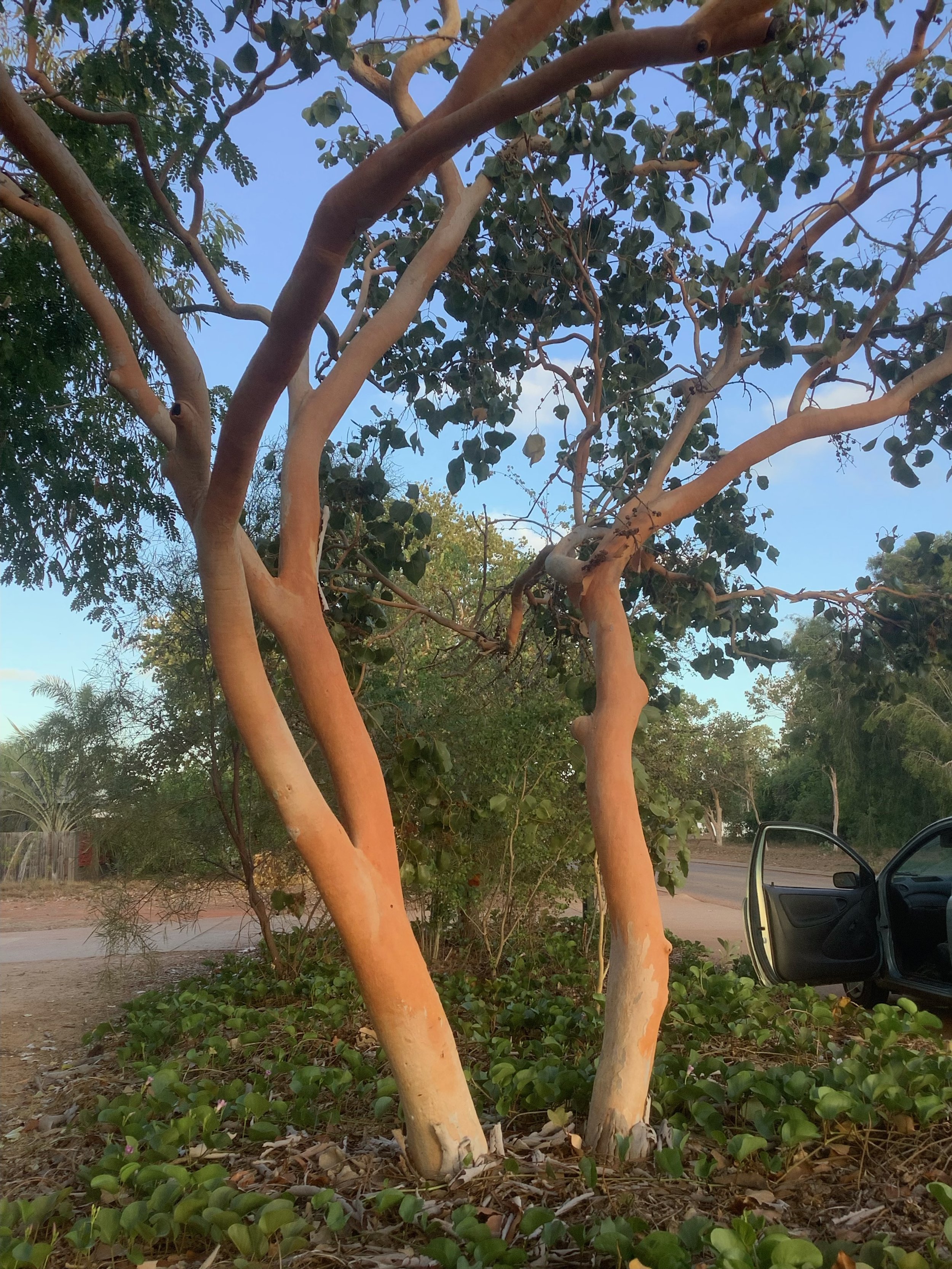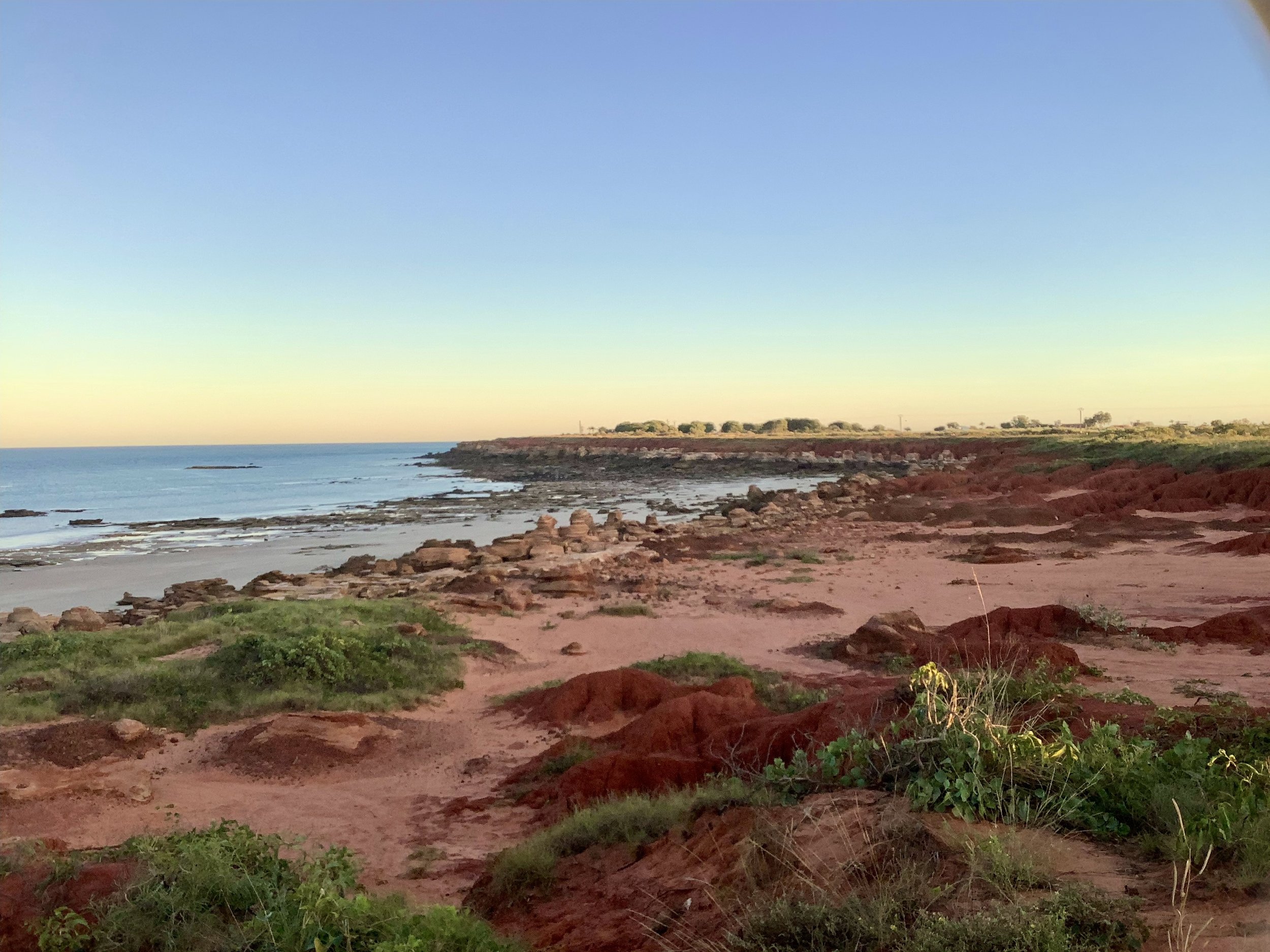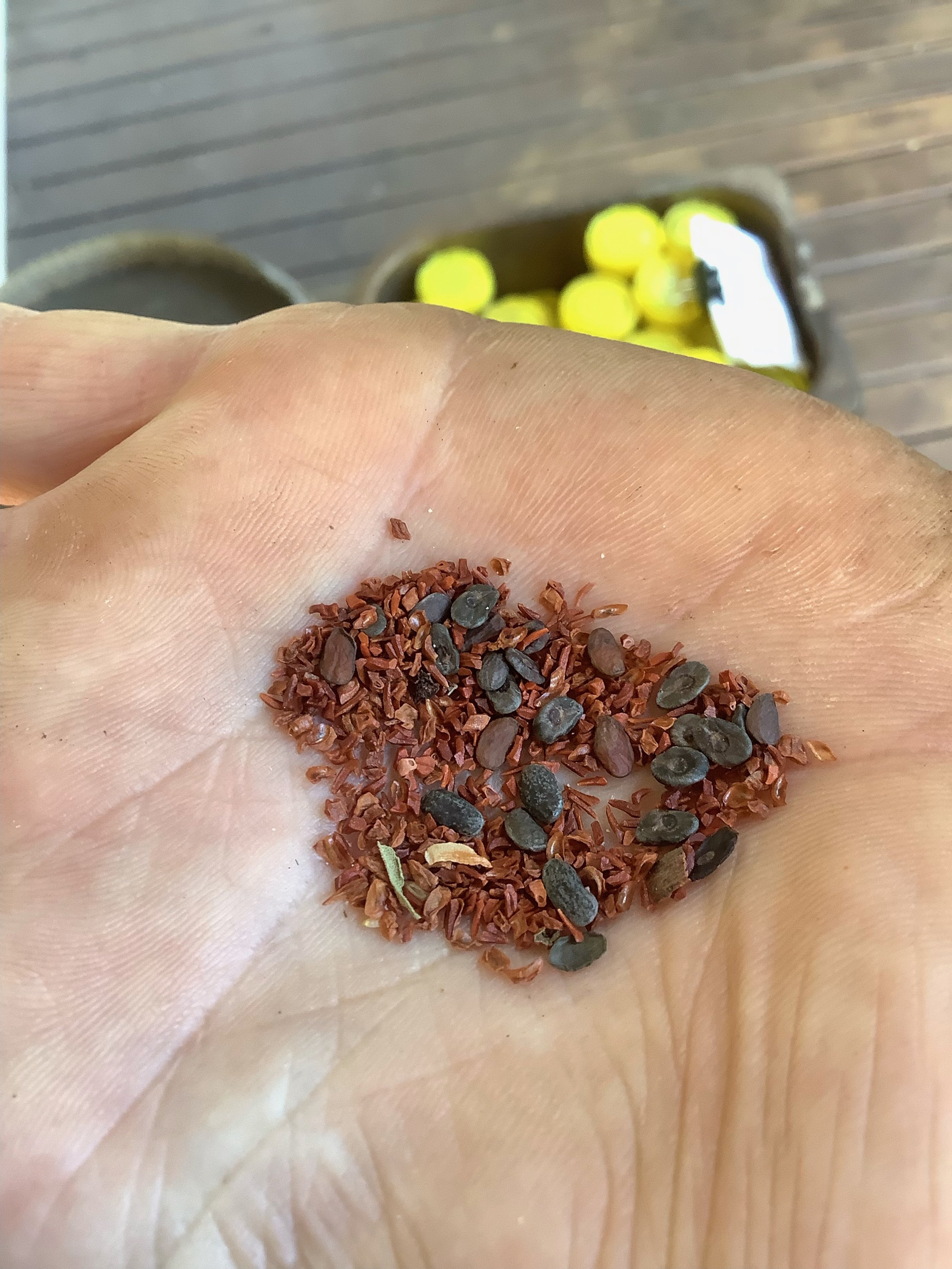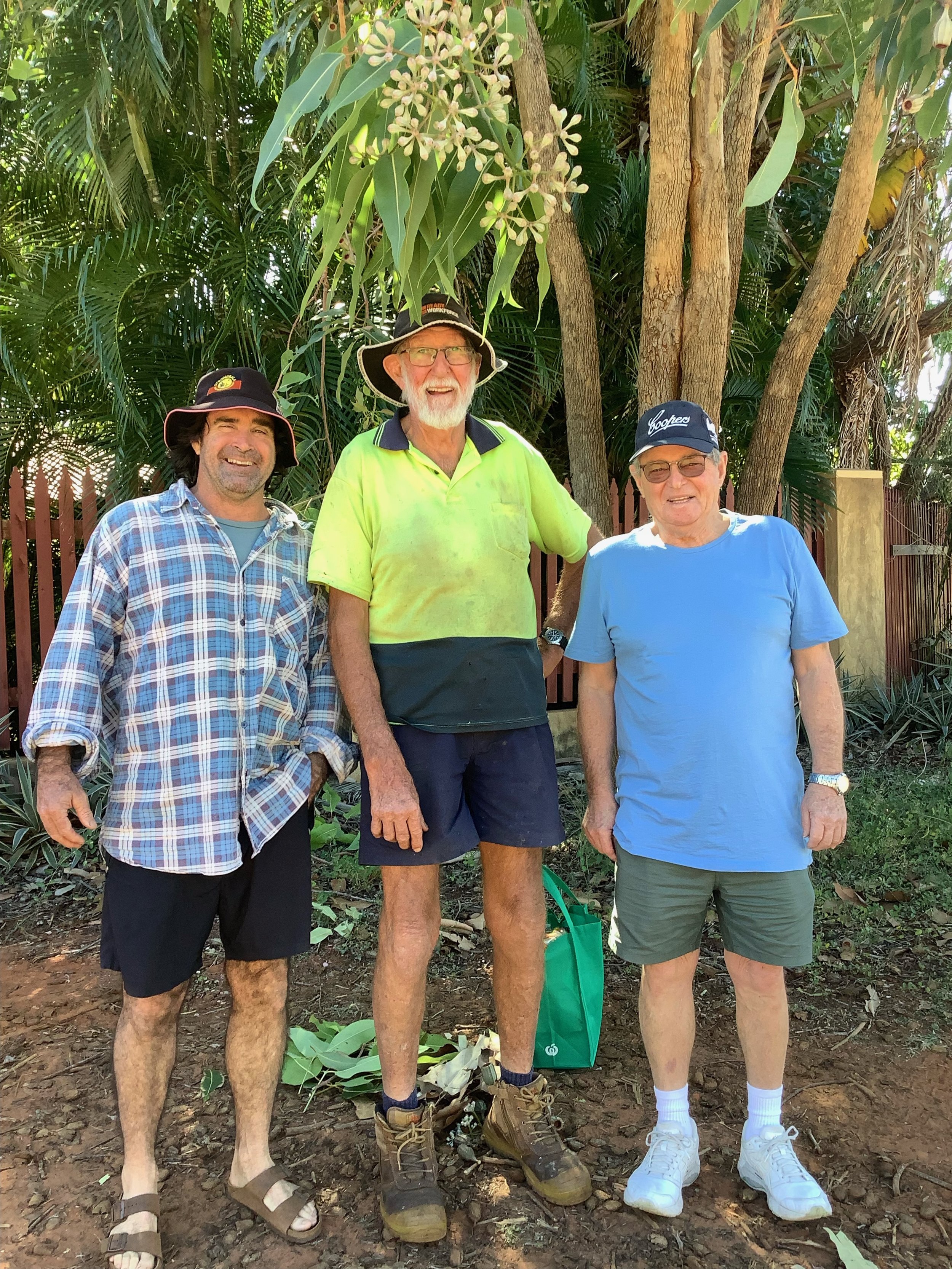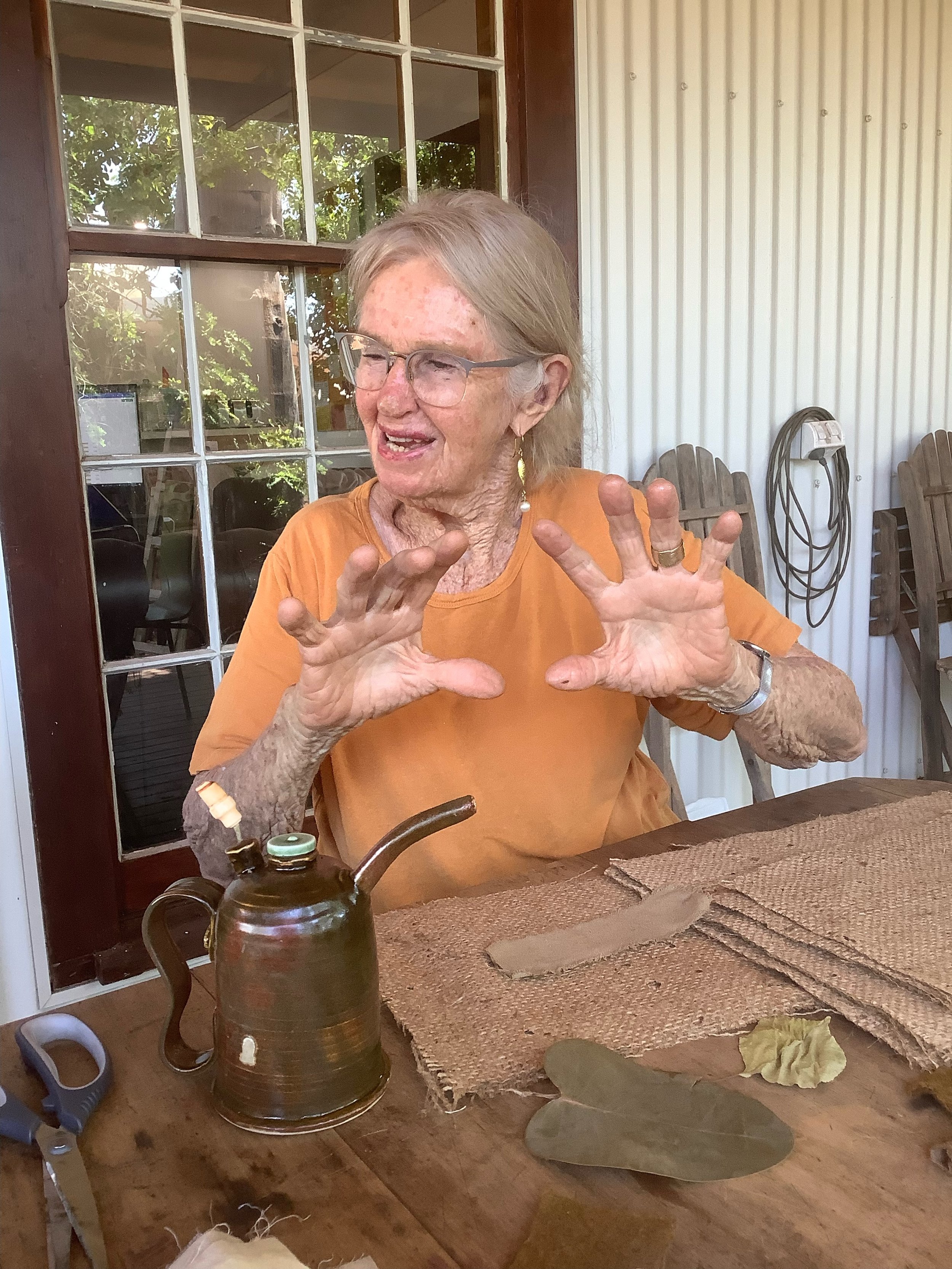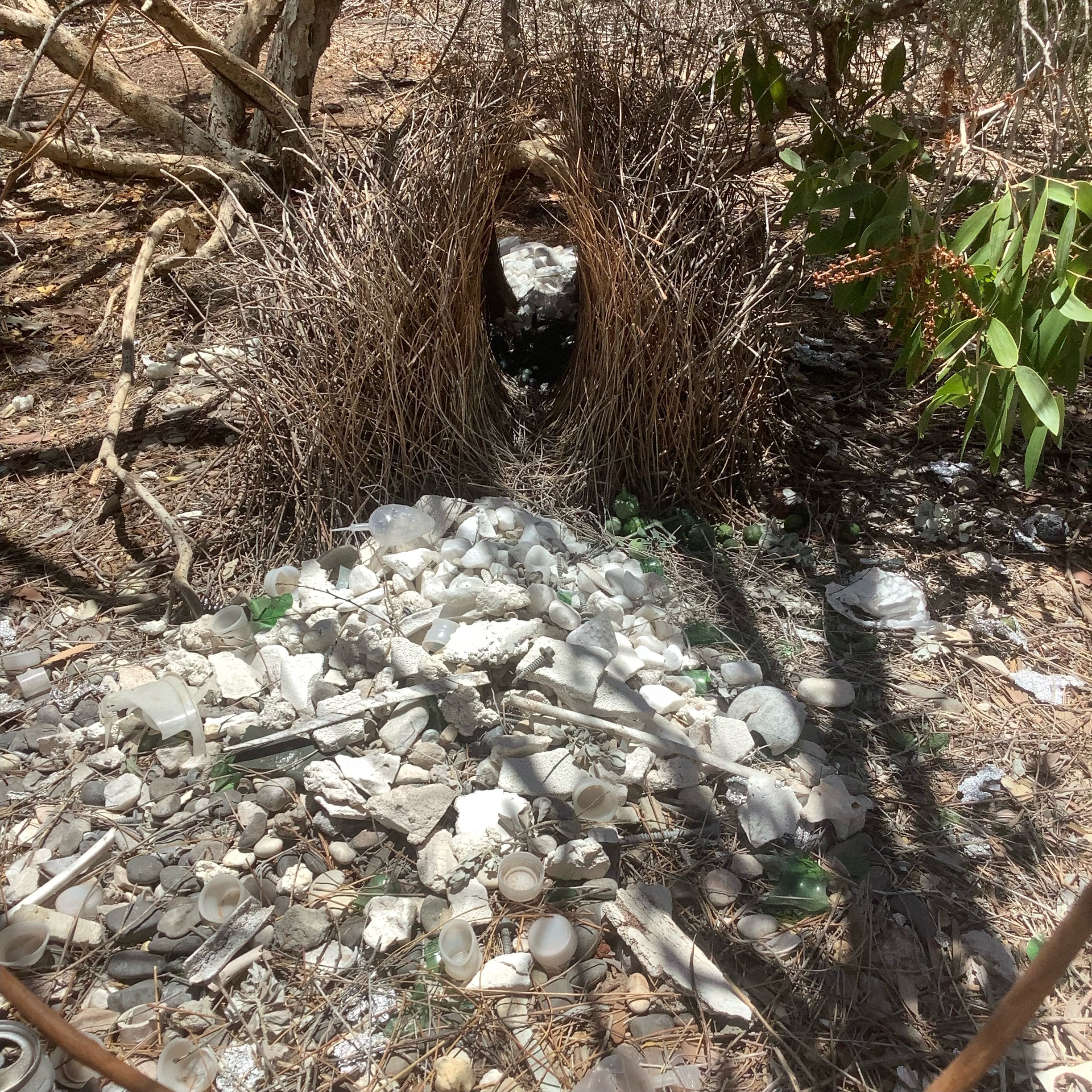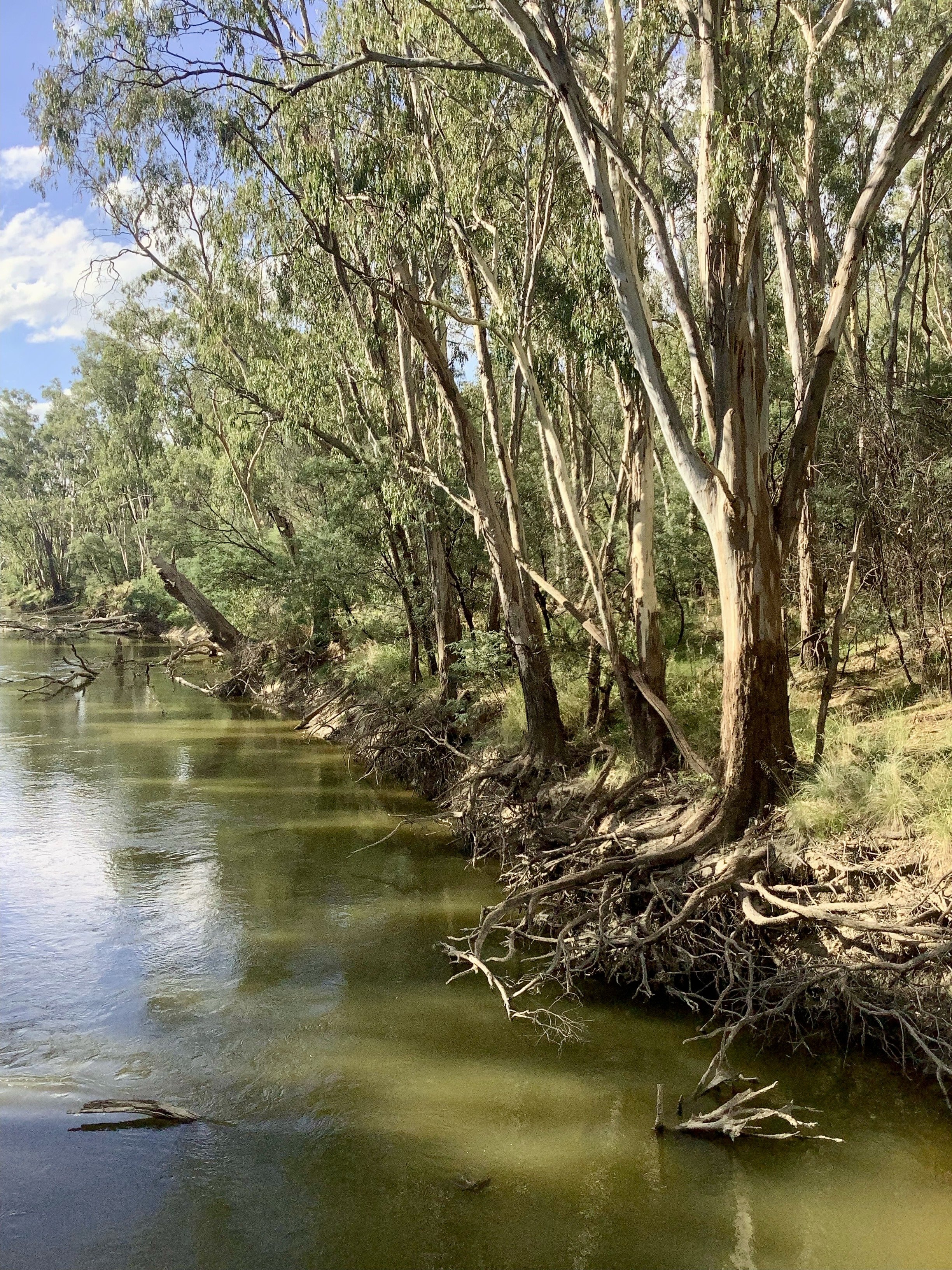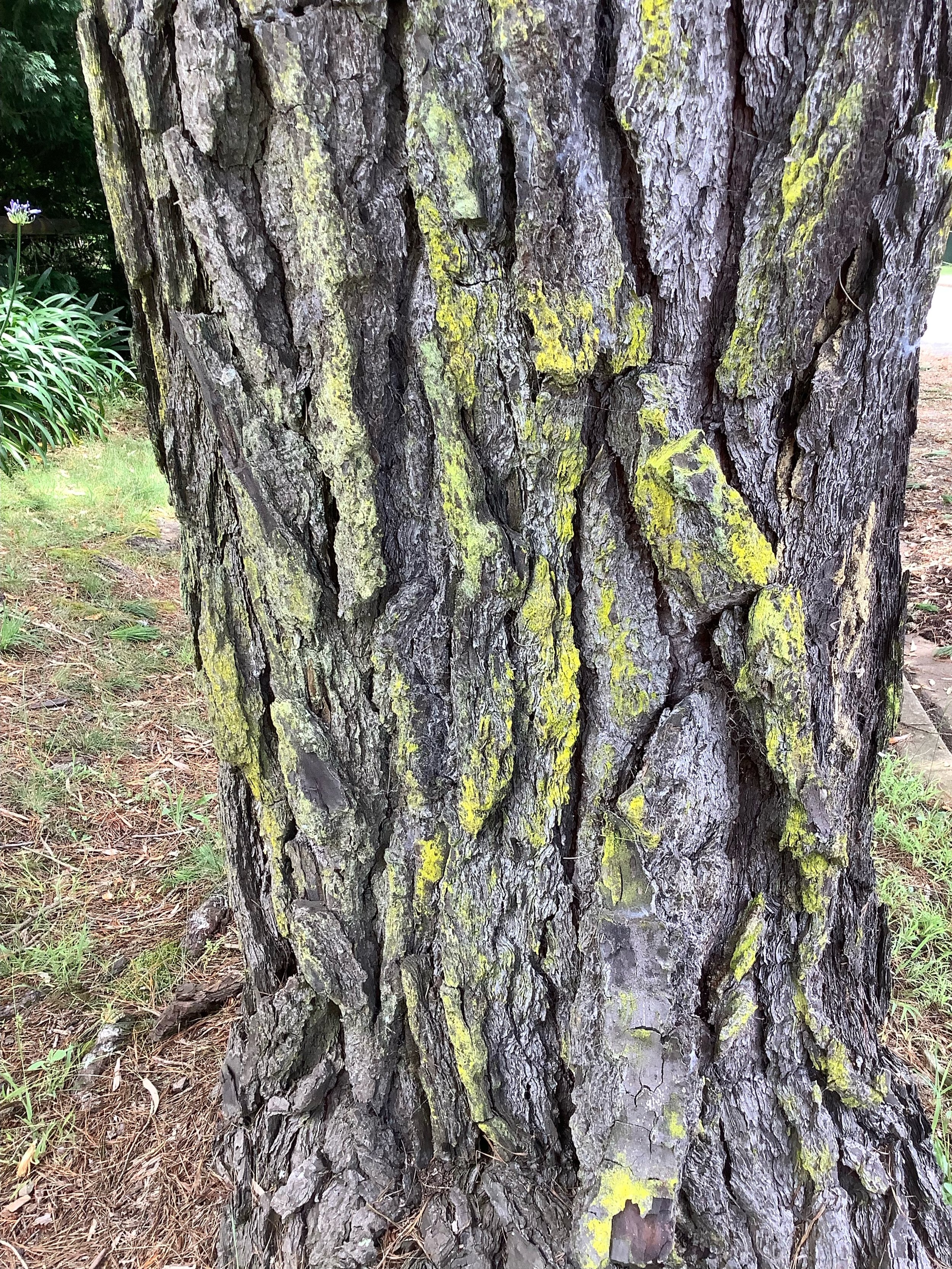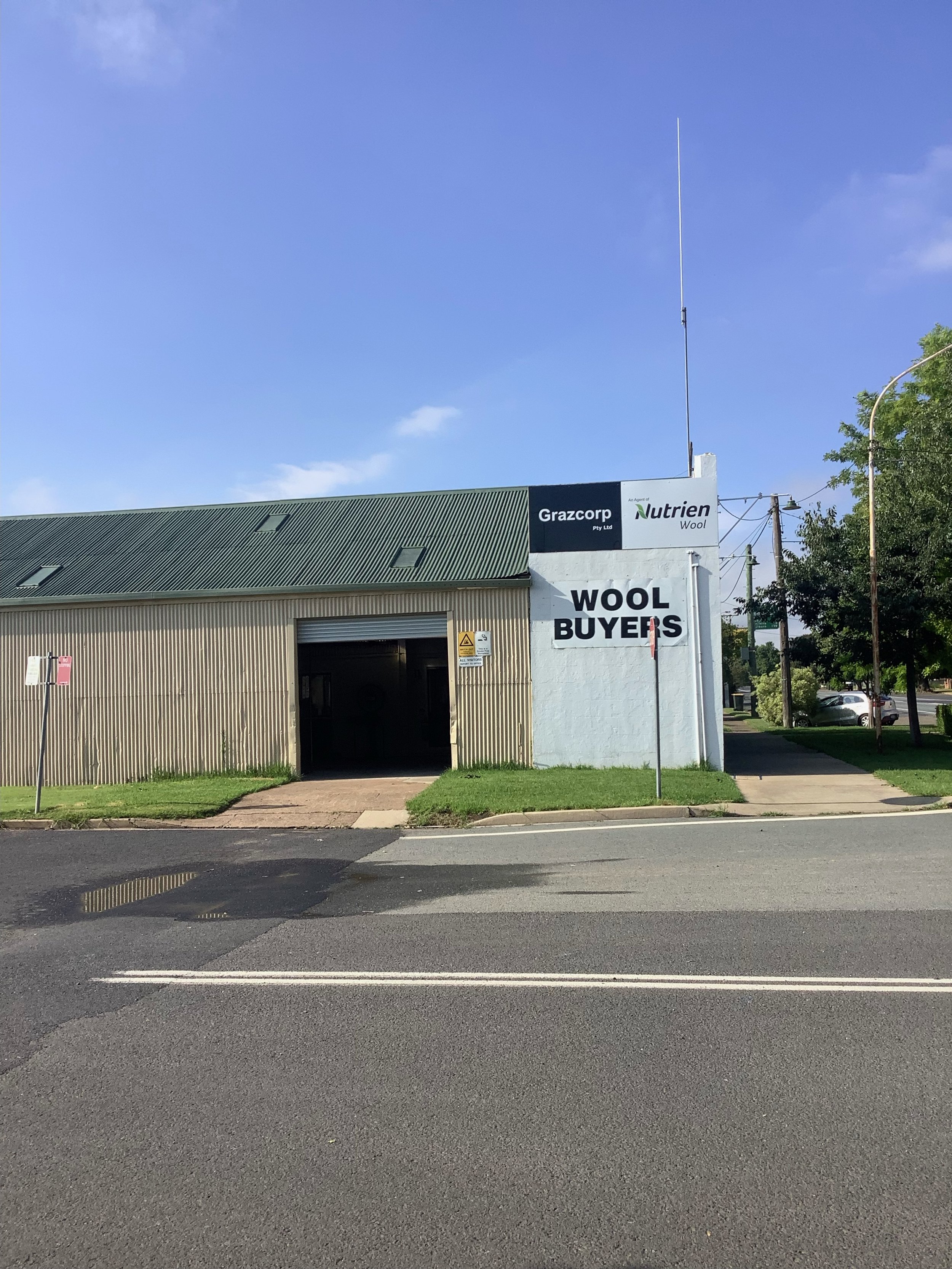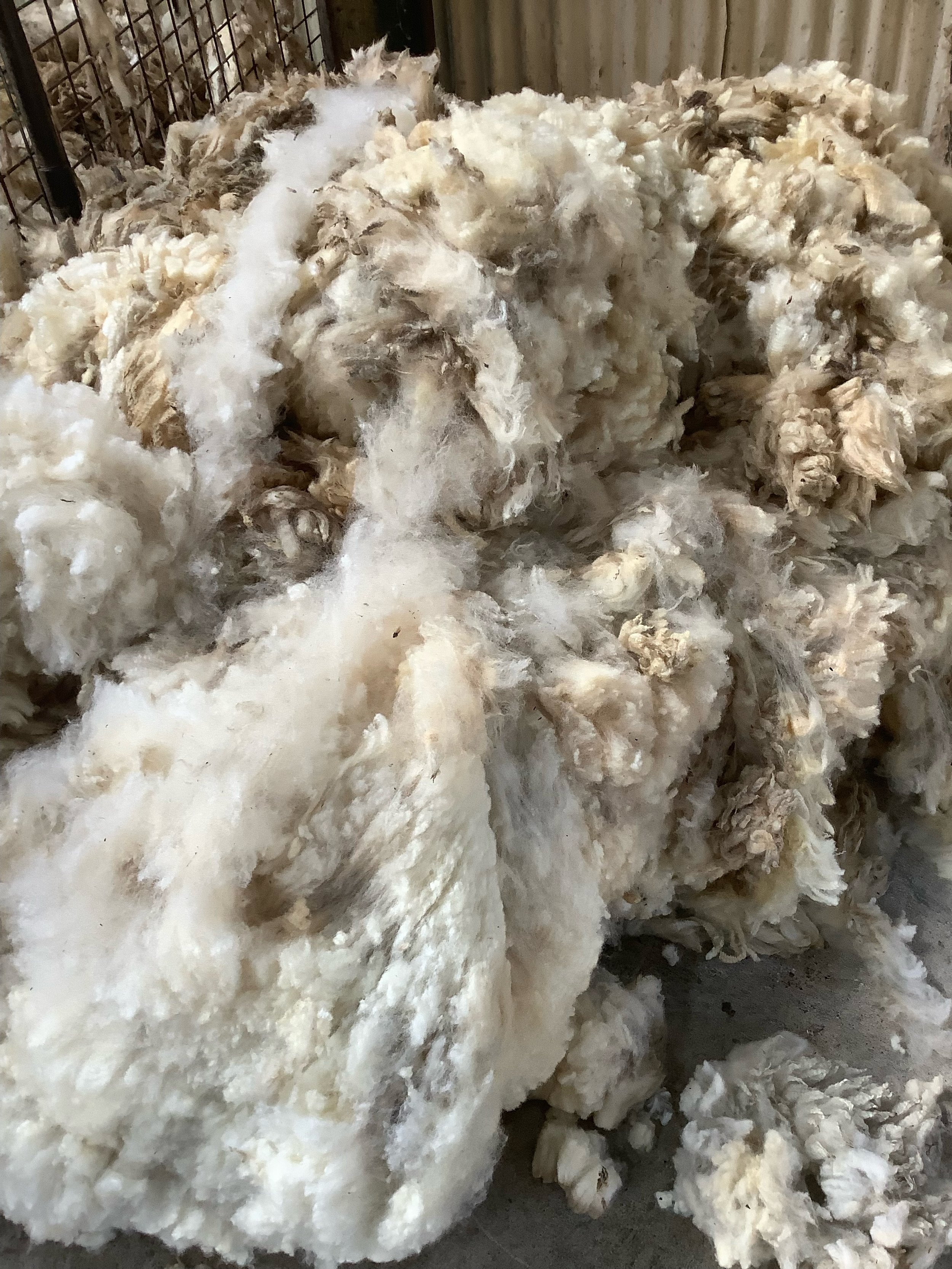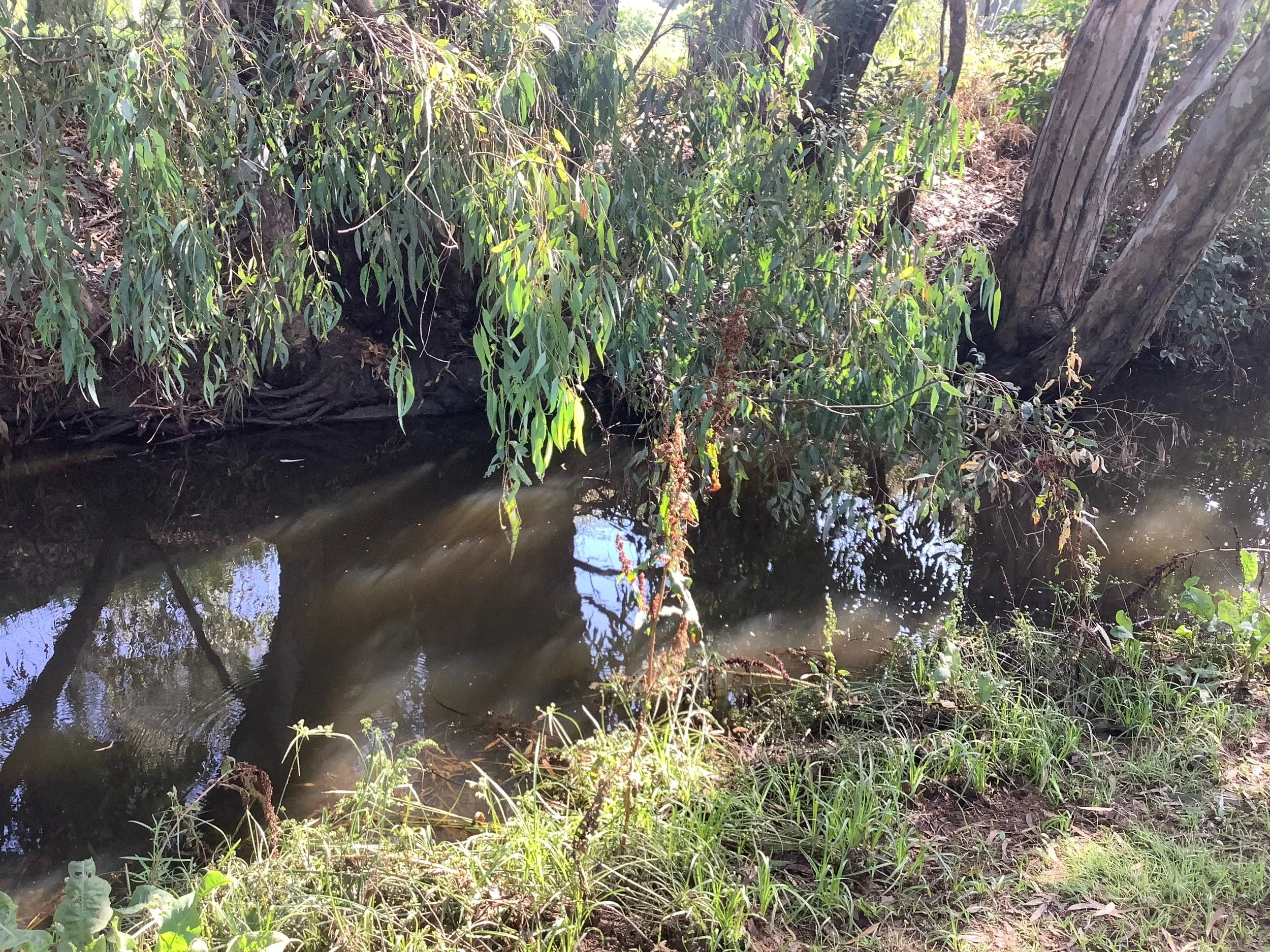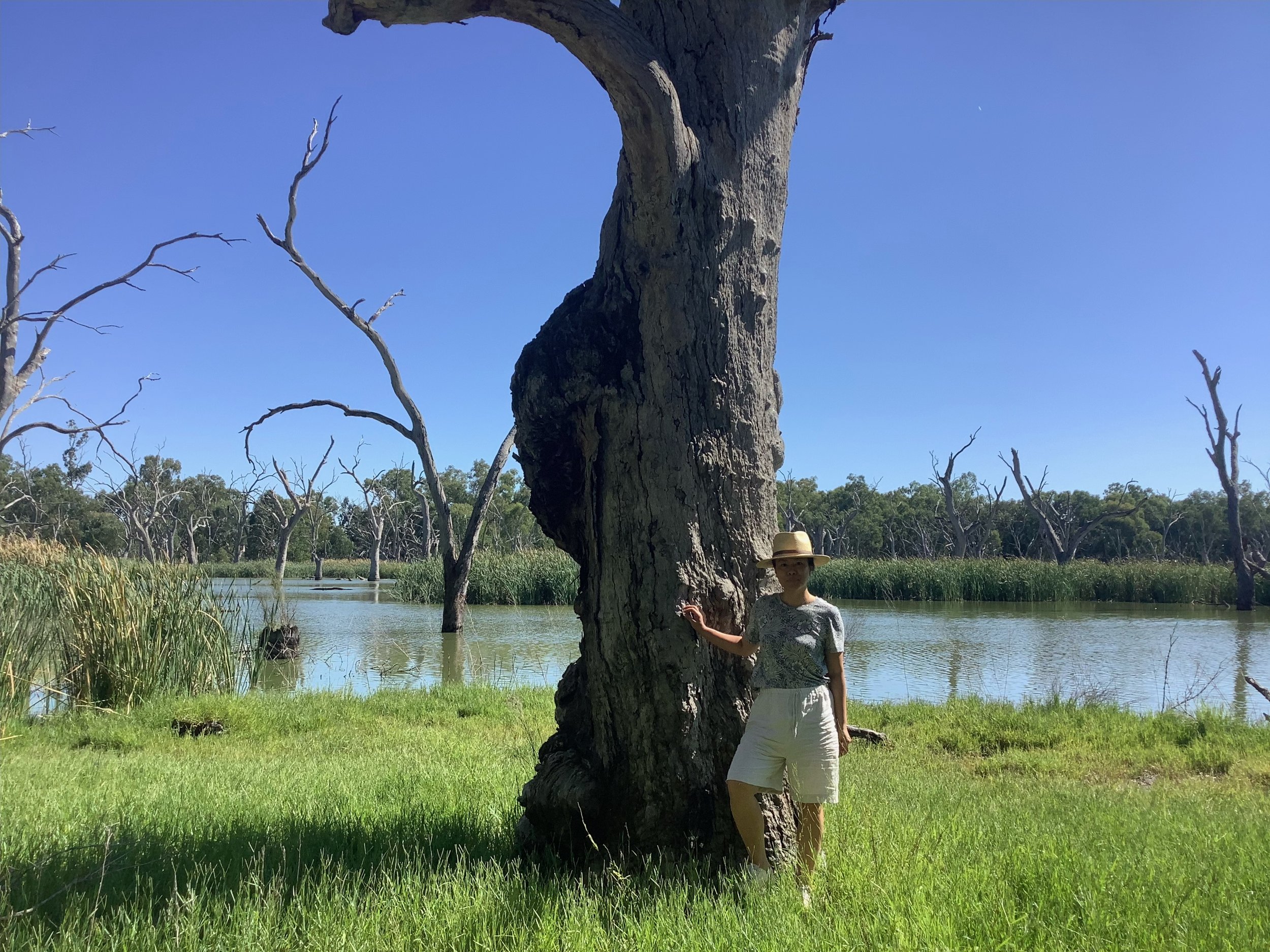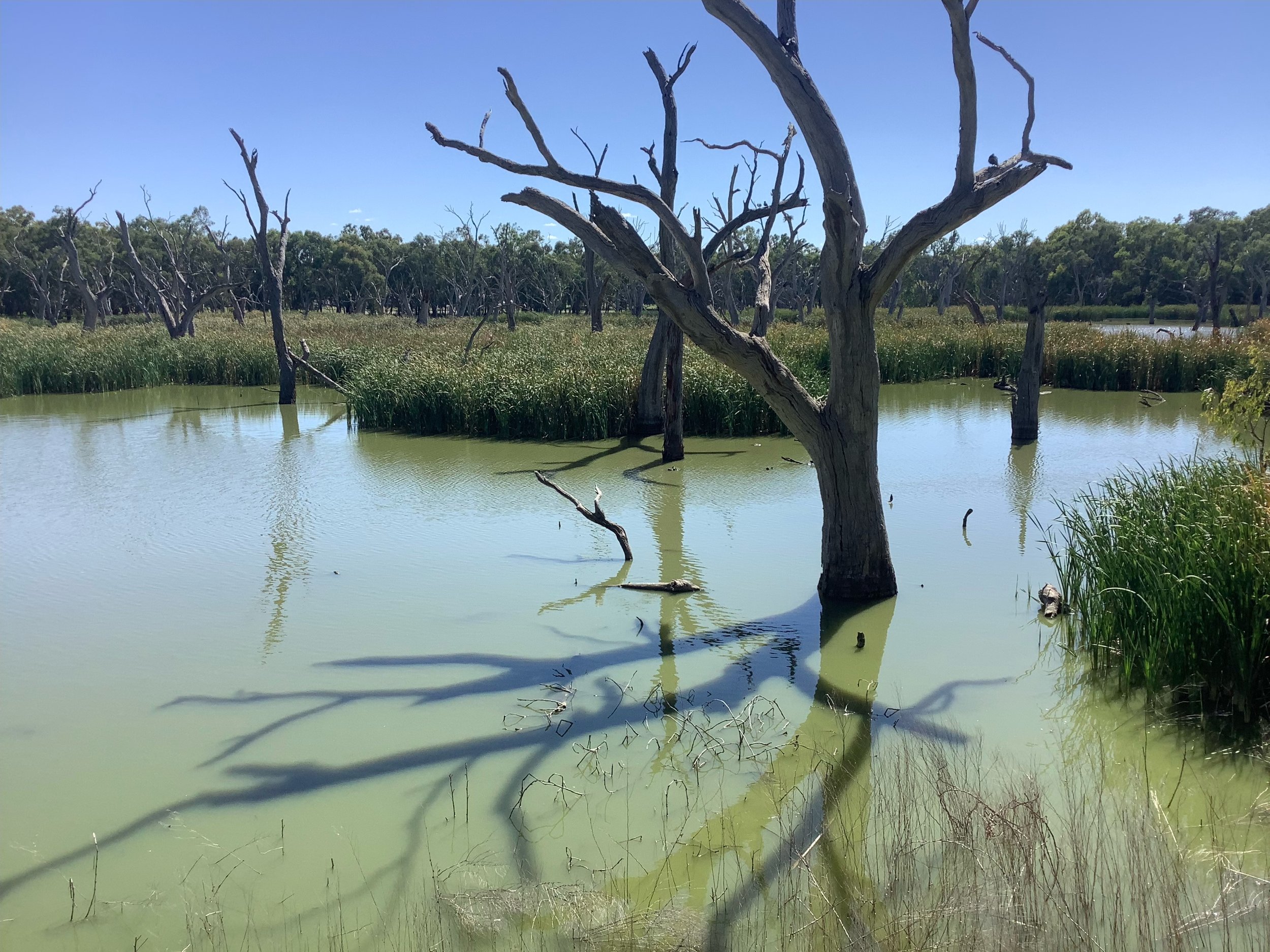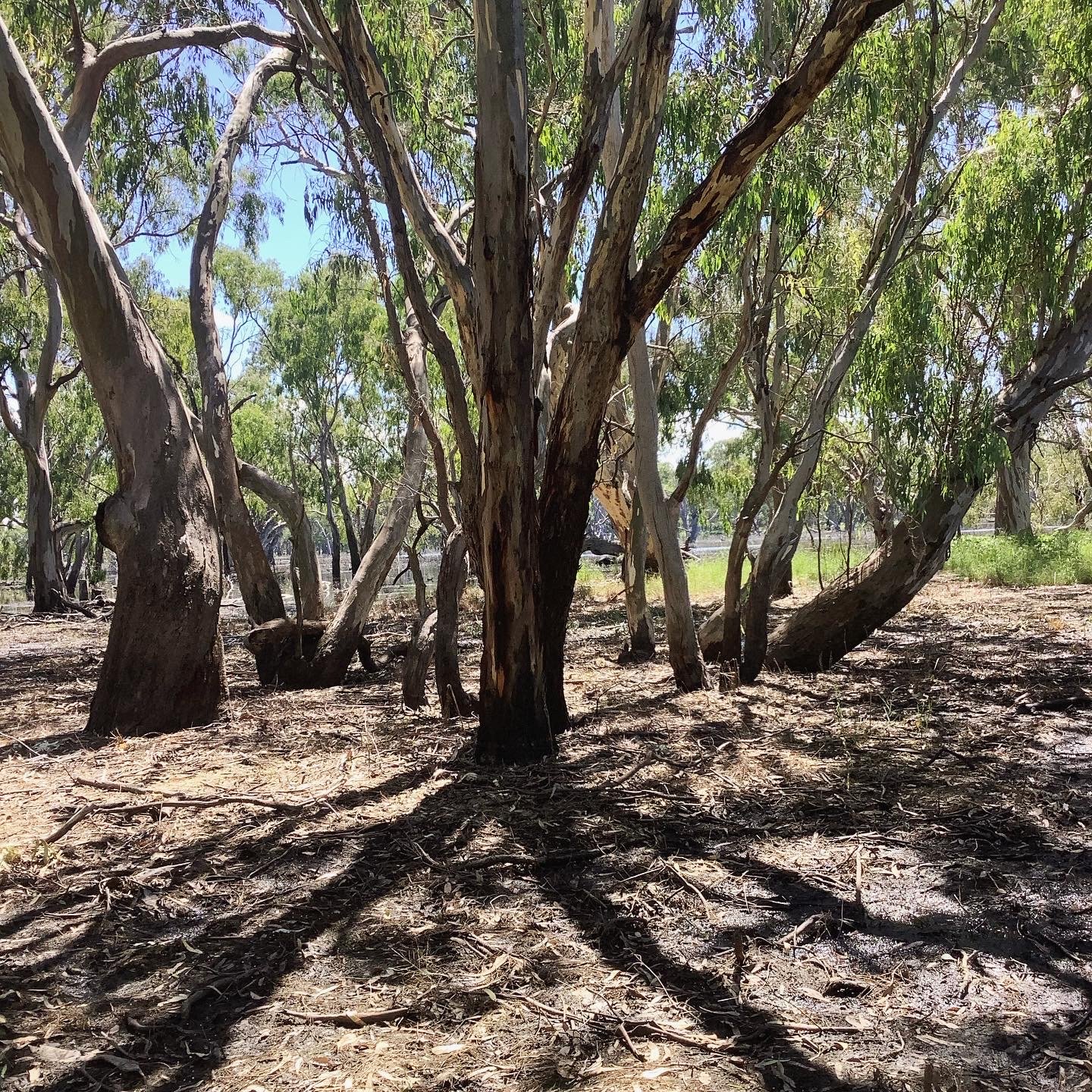Armagh and Clare, South Australia
Ngadjuri country
My first destination was the Clare Valley in South Australia, where I visited the Warndu Farm owned by Rebecca Sullivan and Damien Coulthard, cofounders of Warndu. Warndu is an indigenous-owned company dedicated to revitalizing culture through community, tradition, health, and the land by offering Australian Native Foods. The farm, located on ninety six acres in Armagh, is surrounded by thousands of native trees, including various species of eucalypts where I began my research. Rebecca, who is a fantastic cook, catered our workshop with her delicious creations.
We held a Natural dye and weaving workshop where I was joined by Sonya Rankine, founder of Lakun Mara, who draws inspiration from her Ngarrindjeri heritage. Sonya's incredible works and weaving techniques have cultural significance to her Ngadjuri heritage in the Mid North of South Australia. We also had the privilege of hearing stories from Aunty Pat (Patricia Waria Read), an Elder of the Ngadjuri people, who shared her deep connection to the land and stories of her ancestors. Aunty Pat is pictured below in front of a 300 year old River red gum, Eucalyptus camaldulensis in Orroroo, Ngadjuri country.
In the days following the workshop, I spent time in the studio experimenting with dyeing techniques using eucalypts collected from the farm. Damien Coulthard also shared his knowledge of ochre, showing me three different types collected from his country. It was a truly enriching experience that deepened my appreciation for the culture and traditions of the land.
Ikara-Flinders Ranges, South Australia
I had the privilege of returning to South Australia in August of 2022 for the Native Food Festival in Quorn. I was invited on a trip to explore the Flinders Ranges, where we spent two incredible days visiting ancient sacred sites adorned with rock carvings dating back 50,000 years. Our knowledgeable guide and gracious host, was Isaiah Patterson of Wilpena Pound Resort who led led on a mezmorizing journey. Our next guide was Kristian Coulthard, a local Adnyamathanha man and cofounder of Wadna who led us to cultural sites such as Sacred Canyon, Arkaroo Rock, and Dingley Dell, where Kristian shared captivating stories of the land and provided insightful interpretations of the rock carvings, along with a demonstration of local native bush tucker. During our excursion, I had the opportunity to collect samples of Eucalyptus camaldulensis, adding to the unique experience of this unforgettable tour.
Cairns and Far North Queensland
Yidinji country
In May 2022 my research took me to Cairns in Far North Queensland, a journey that reminded me of my time living in Southeast Asia during the monsoon season. The only thing I didn't miss was the humidity that drained my energy each day. Equipped with notes from the local City Council and contact information for local rangers, I set out to explore the tropical plants and eucalypts of the region on a rented bicycle.
Witnessing eucalyptus trees thriving in the tropical climate was a surreal experience especially seeing them alongside Coconut palms on the white sandy beaches. I allowed myself a brief stop to sit and soak in the views for a moment. There were several species I couldn't collect due to their location in crocodile-infested waters as my goal was to complete the research and return home safely to my family!
During my time in Cairns, I had the honour of meeting Susan Reys, an established Aboriginal artist and a descendant of the Badjala people of Fraser Island and Darraba people of Cape York. Susan has over twenty years experience as a ceramists and potter using locally sourced clay. Her husband Henri Fourmile, a traditional elder of the region. Together with her sisters they founded the gallery K’gari 3 Sisters in downtown Cairns. Susan and her sister Jennifer introduced me to local plants eaten by Indigenous Australians, included native banana, blue quandong, cherry, plum fig and the cheese fruit. To have the opportunity to taste and experiment with these plants was such a satisfying moment. After a day of visiting local and sacred sites of their people, we headed back to the studio to begin our natural dye experiments. Their connection to the land and traditional practices was inspiring, and I felt privileged to learn from their knowledge and expertise.
There was a huge Corymbia Calophyla outside the front of the studio where Susan collected the gum nuts to paint on. As I left Cairns and returned to Brisbane, I carried with me the memories and lessons learned during my time with the Reys family.
Southeast Queenlsand
I traveled to Queensland multiple times, with my first visit being in January 2022 as I eagerly awaited my travels to Western Australia. I embarked on a road trip to see 'old Caesar,' a Eucalyptus tereticornis known as a Forest Red Gum that had supposedly self-seeded in 1550.
After returning from trips up north in May and July, I spent several weeks in Brisbane dyeing the colour samples for my catalogue. My parents' garden in Southwest Brisbane provided all the natural mordants I needed for dyeing eucalyptus from Queensland.
Albany and Southwest of Western Australia Noongar boodja country
The journey to Albany on the south coast of Western Australia was a long one, with cooler than expected weather. Despite being a bit out of town, my motel was pleasant and welcome change from the mite-ridden place I had stayed in Cairns. I hired a bicycle to get myself around town.
My contact and guide in Albany was the lovely Tess Bryant, a local permaculturist and sustainable educator. Together, we visited Denmark to see the natural habitat of the Corymbia Ficifolia, a lifelong dream come true. Although most were not in flower, we managed to collect a few blossoms from town. We embarked on a road trip from Albany up to Boxwood Hill to Stirling and Mount Barker. This road trip was my most memorable as the native flowers in this region were the most magnificent and spectacular works of nature that I have ever seen.
Broome, Western Australia
Yawuru country
In Broome, I met up with Phil Docherty, a recipient of the Dahl Fellowship in 2021. Phil has collected seeds of eucalypt species from the Kimberley region. The Salmon Gum, with its smooth reddish trunk, was a standout in the area. Broome's landscape was breathtaking, with spectacular colours in the sea, soil, and sky. Phil, his wonderful wife Martine and I went on a road trip to Derby to collect a few extra eucalypt species that I hadnt sampled in my collection.
I had the opportunity to return to Broome in November 2022, where I was invited to work with emerging Aboriginal artists with the Jimmy Pike Trust. We foraged for local eucalypts and bush medicine to create natural dye baths and worked on various techniques together. The opportunity to work with such talented artists was truly an honour.
The book Kimberley Eucalypts by Phil Docherty, can be purchased via Environs Kimberley .
Southwest of New South Wales
I traveled to Barooga, located along the New South Wales and Victoria border, to collect the iconic Eucalyptus camaldulensis near the Murray River. I visited regional towns in New South Wales including Forbes, Parkes, and Orange to gather Swamp gum (Eucalyptus ovata). In Boorowa, I missed the Irish Woolfest but got to see some of the finest merino wool produced in Australia.
Tasmania
During my visit, I had the pleasure of exploring Gecko Strands garden, where many of the samples I collected were gathered with the wonderful textile artist Linda Chee, who has dedicated herself to cultivating endangered eucalypt species from Tasmania on her stunning property along the Huon River in Franklin.





